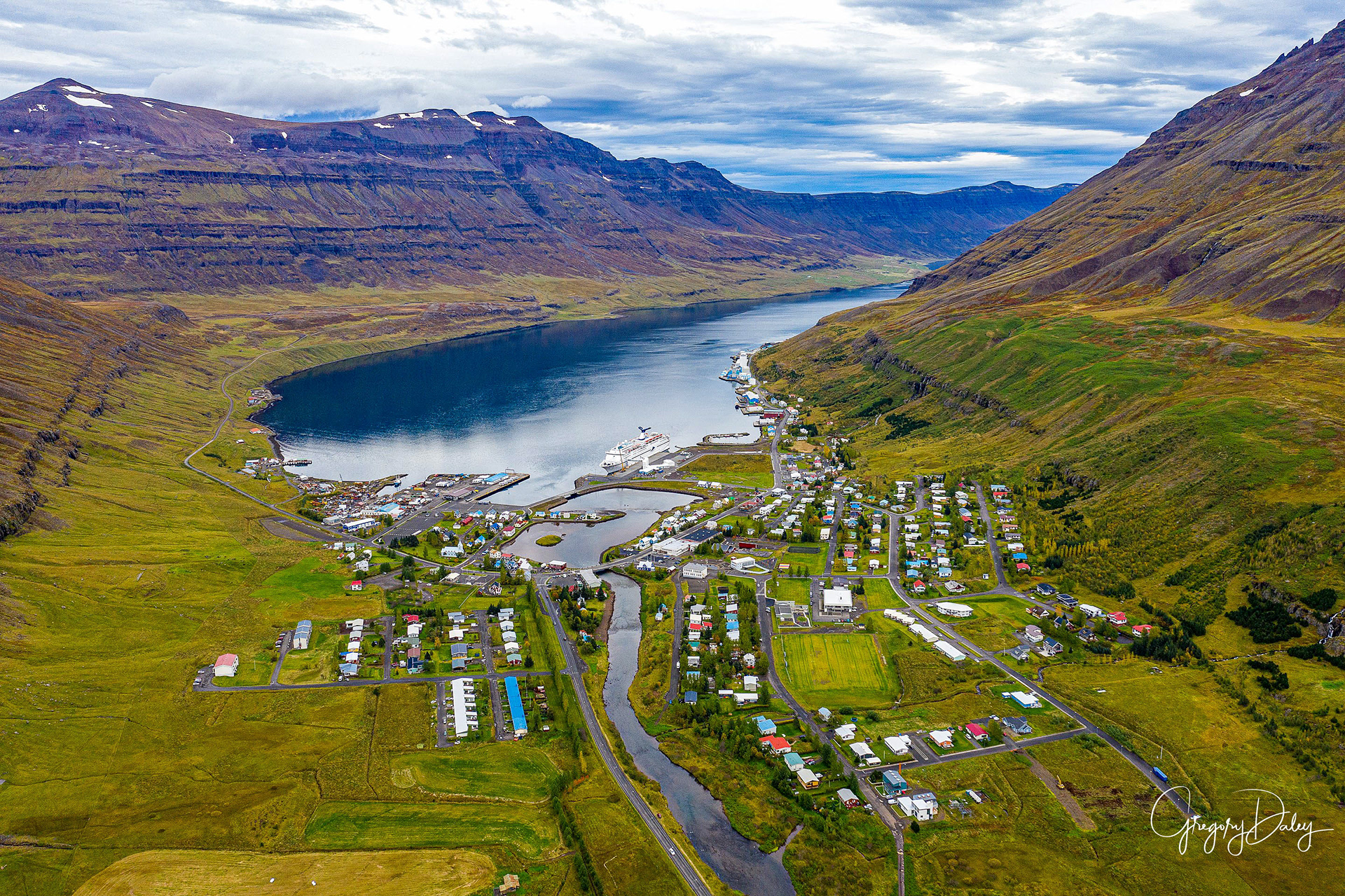
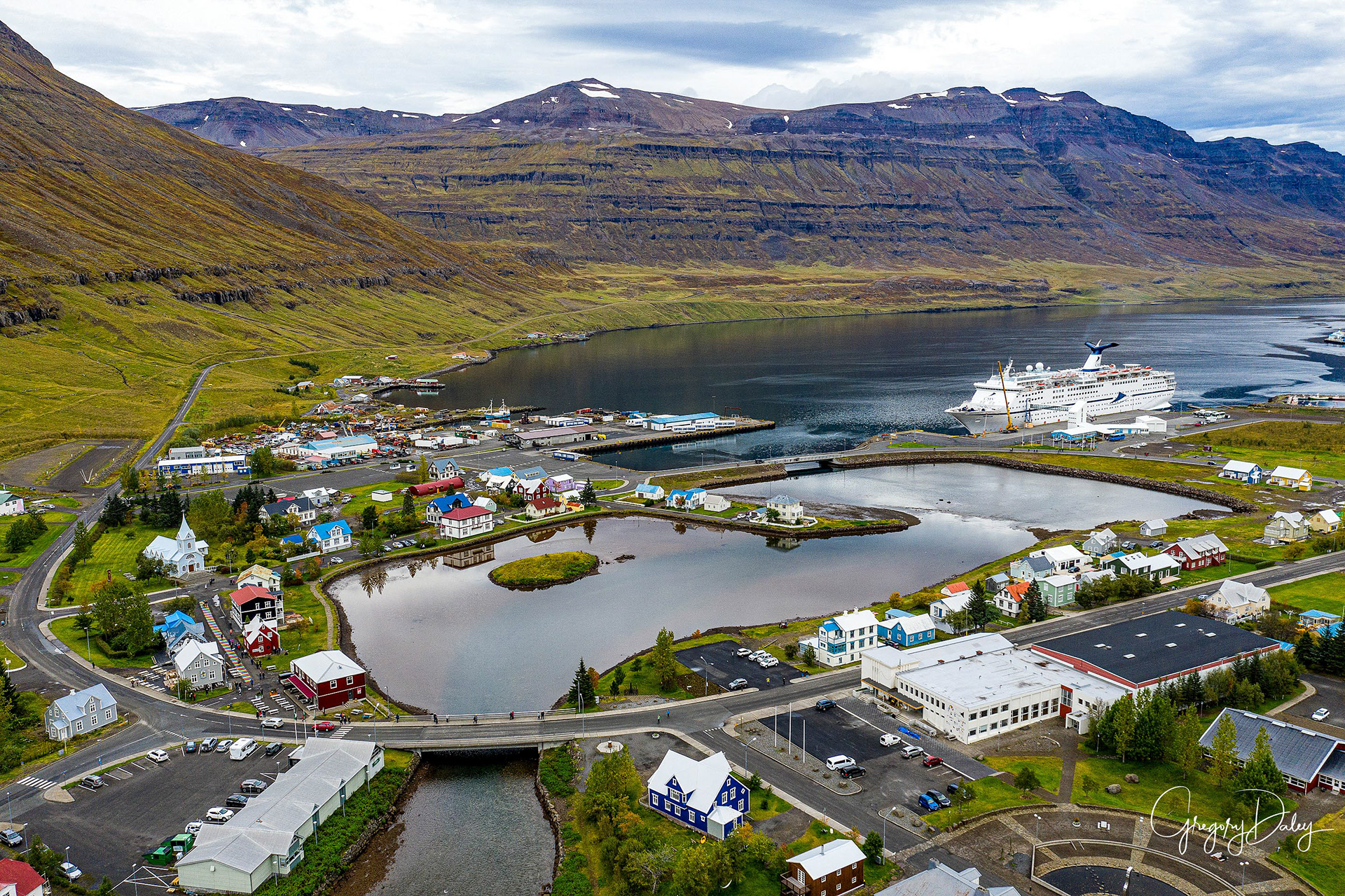
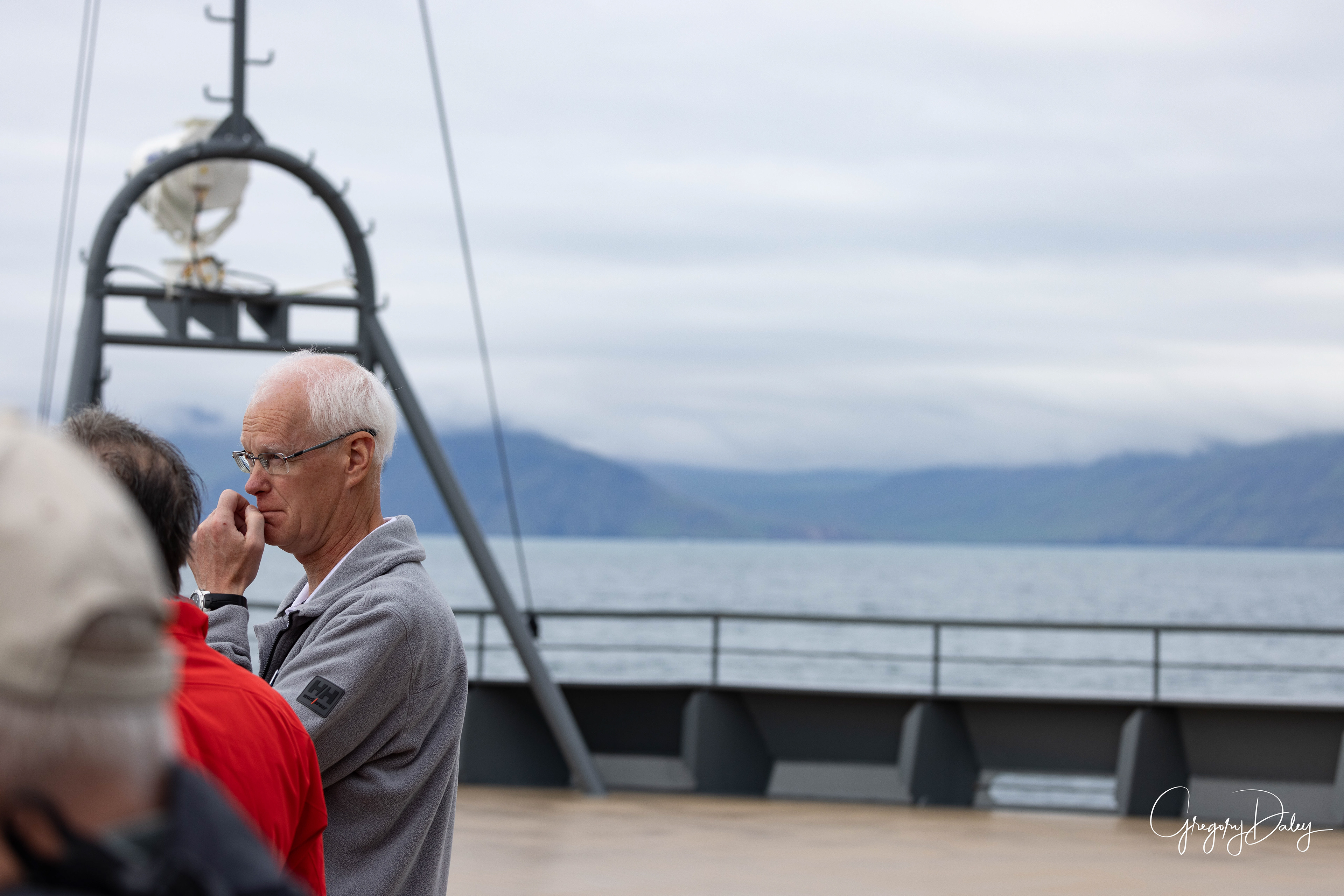
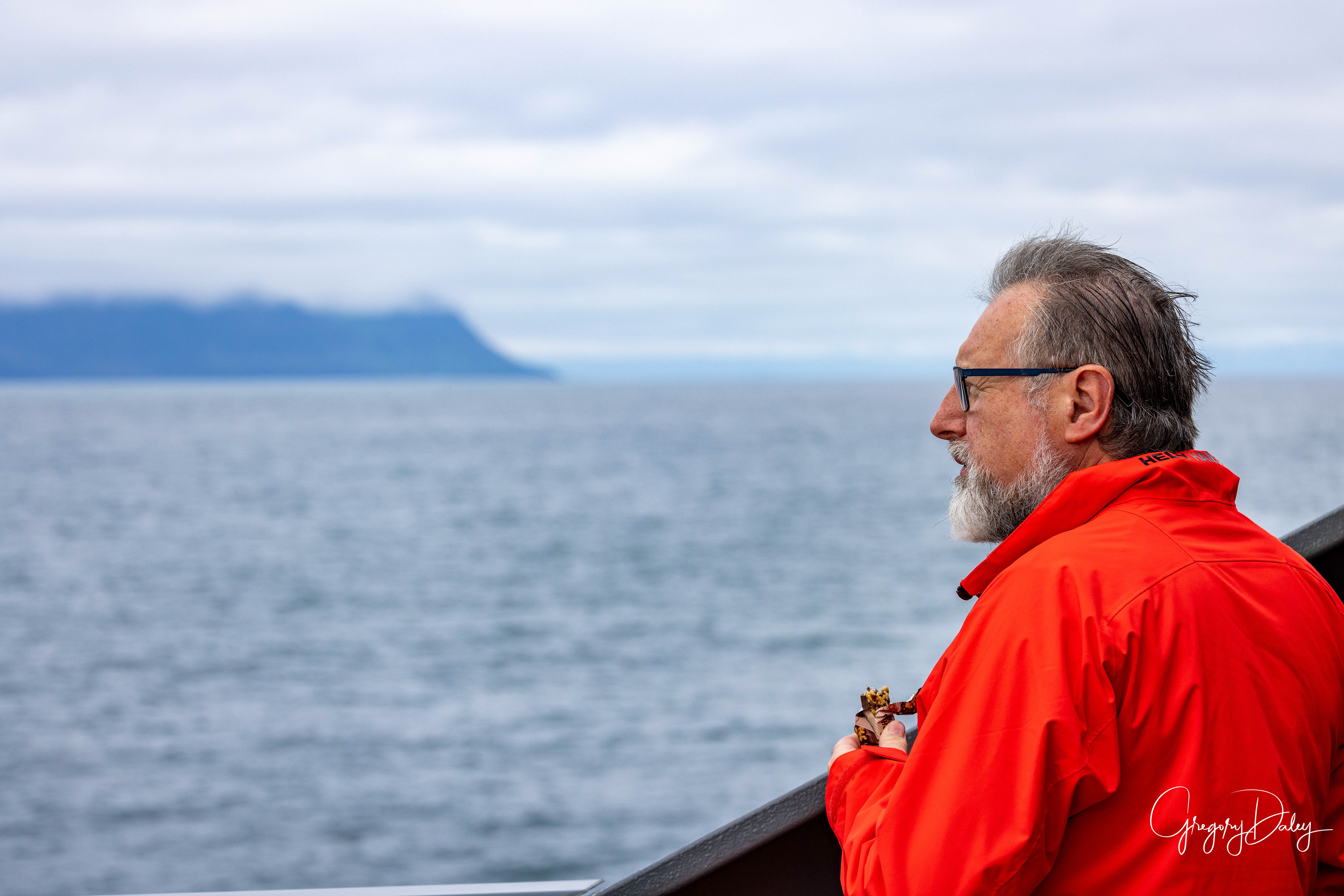
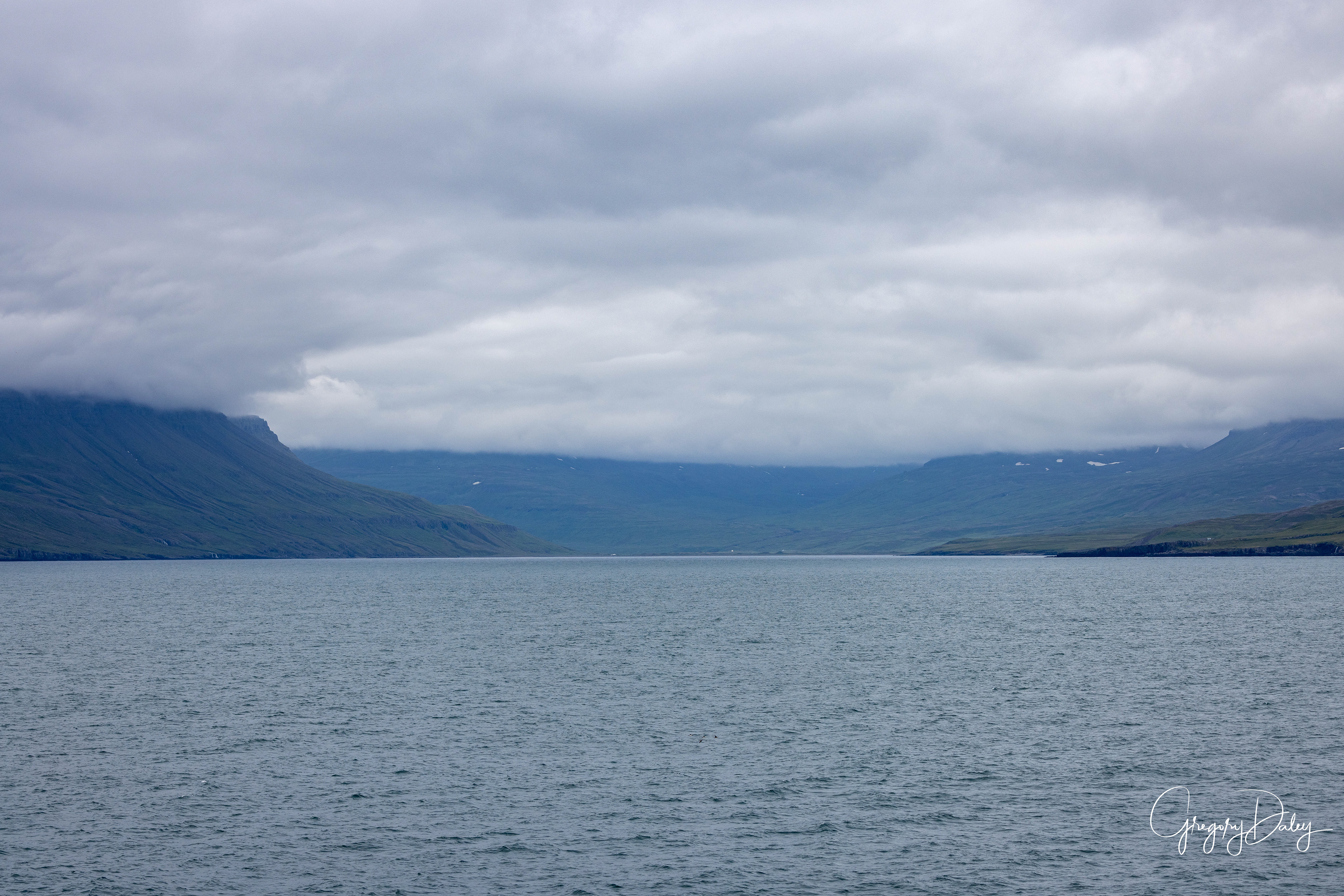
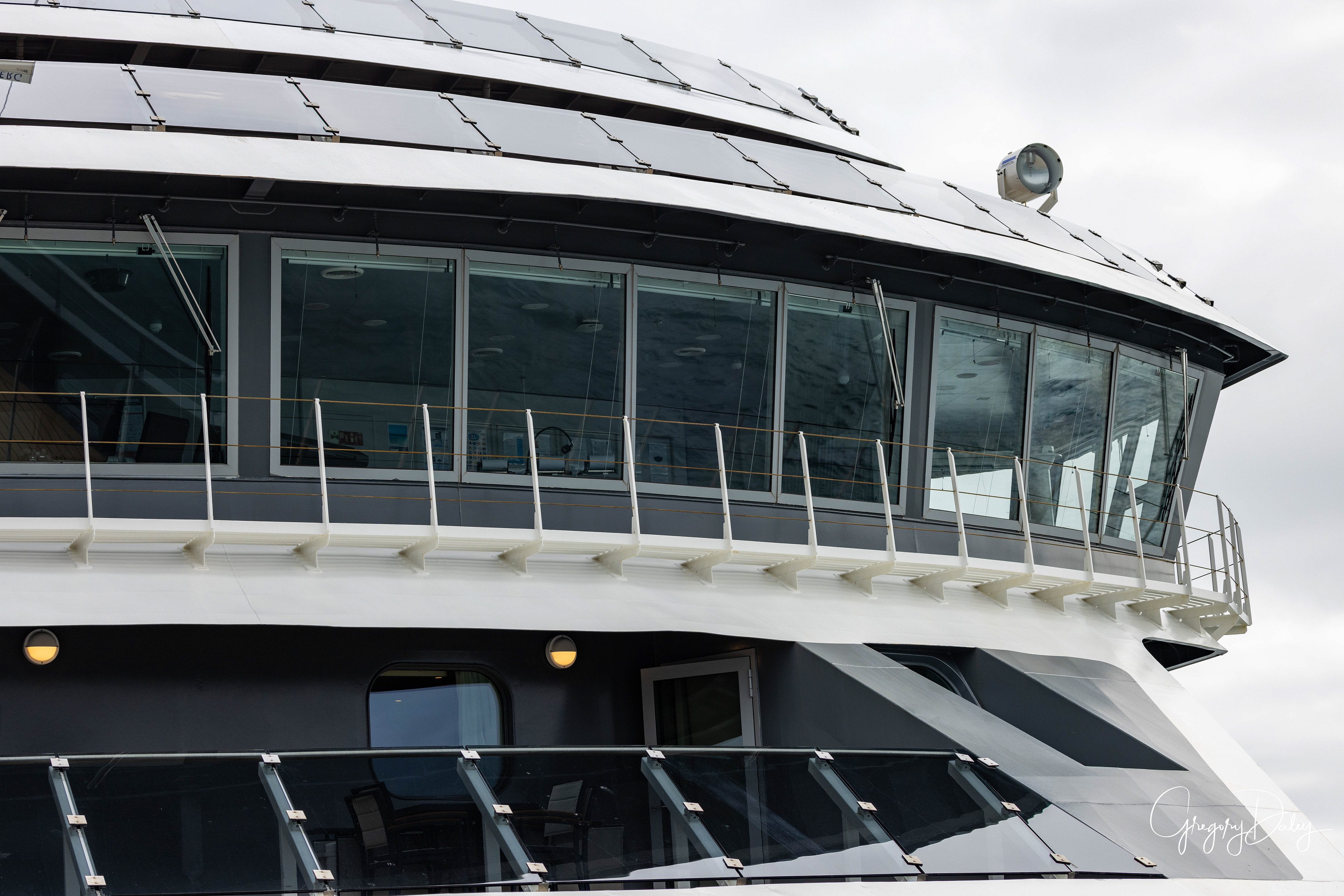



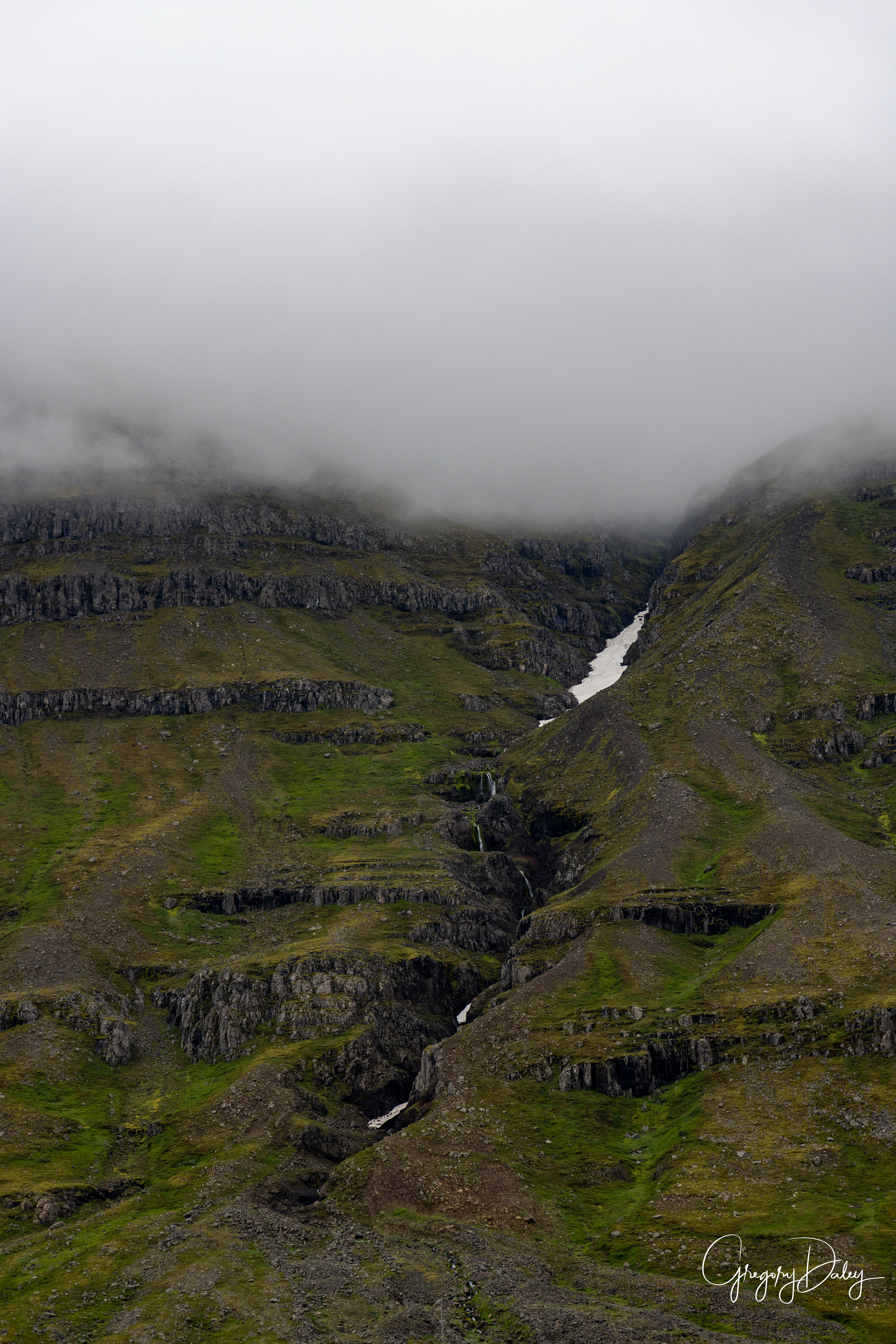


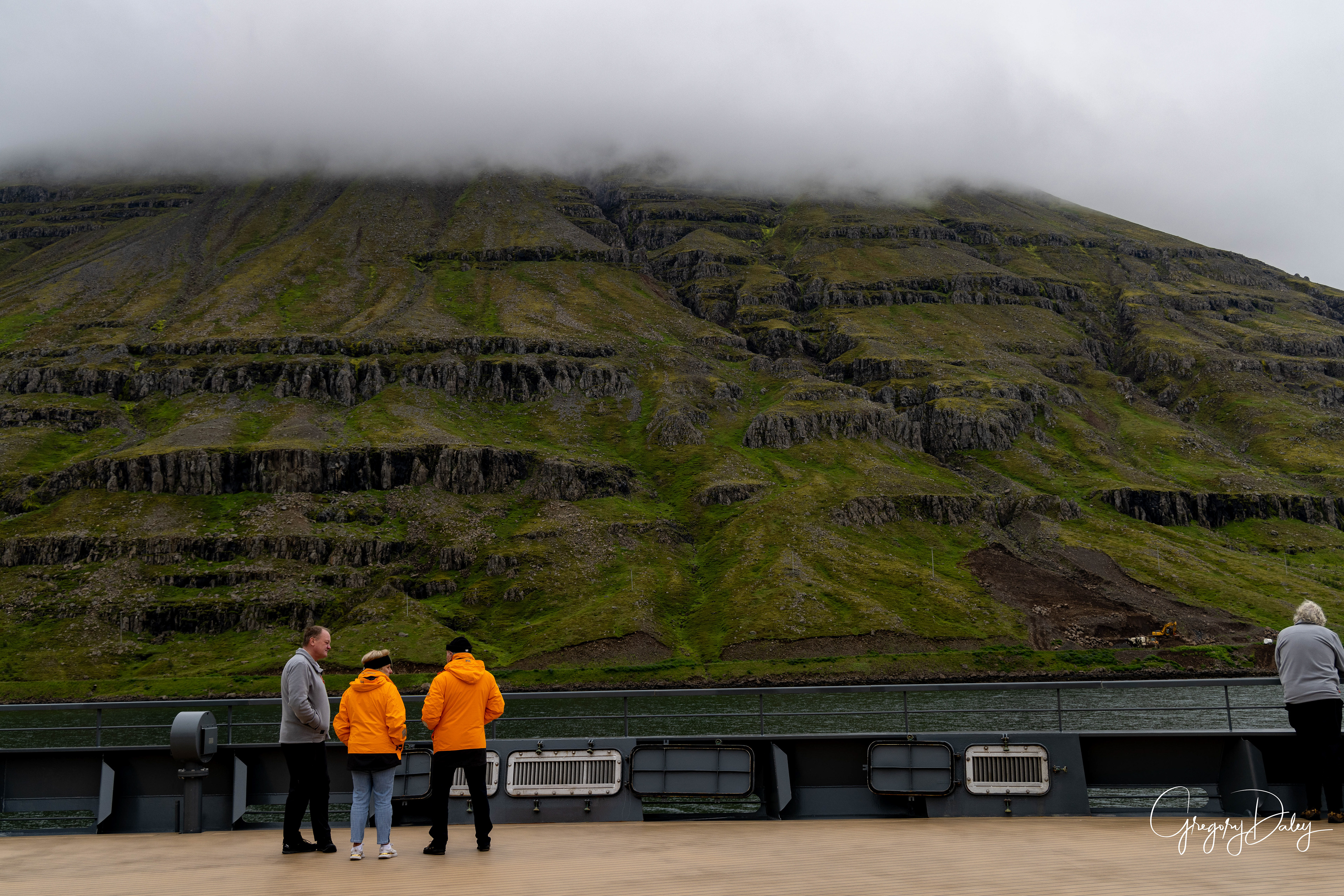
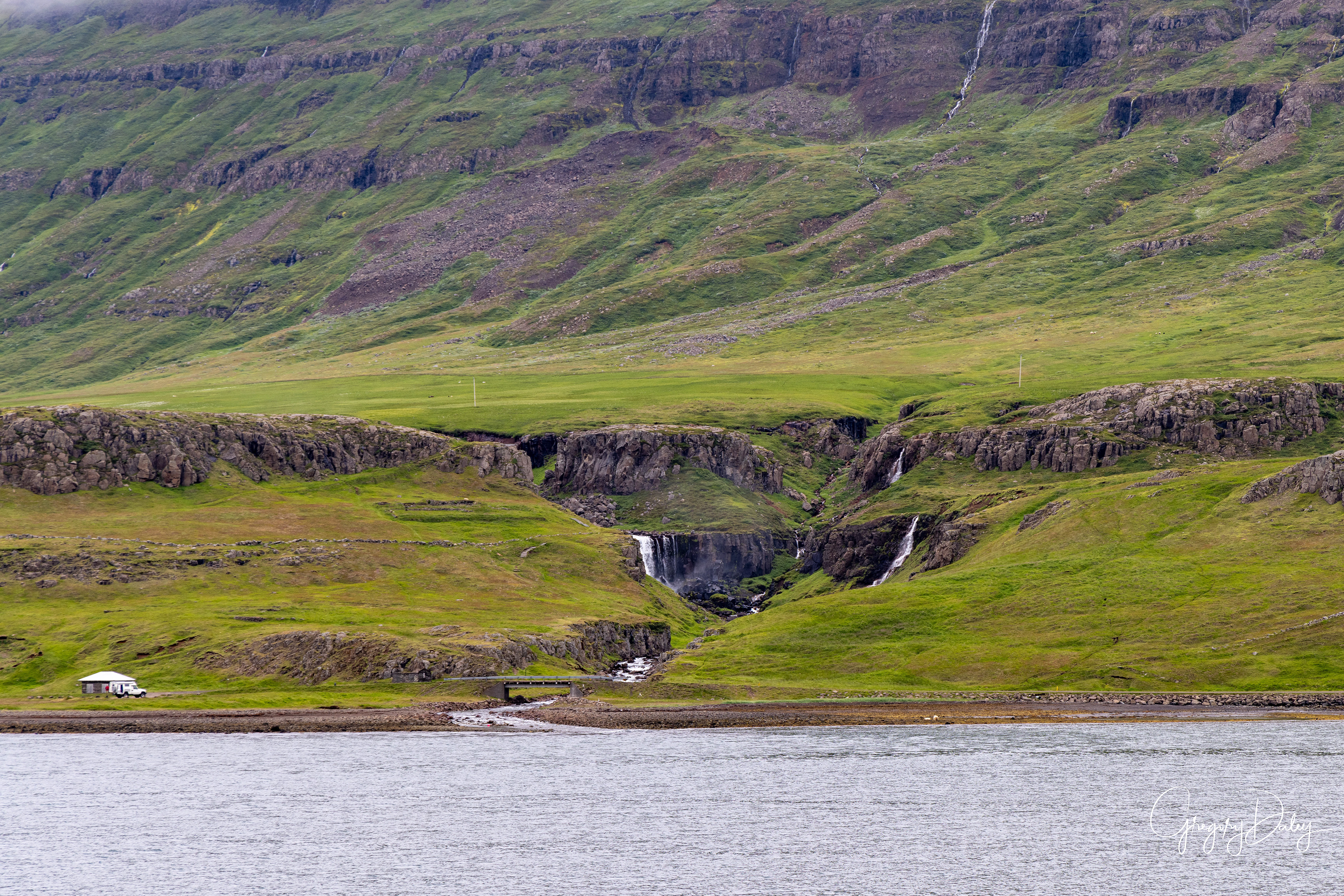

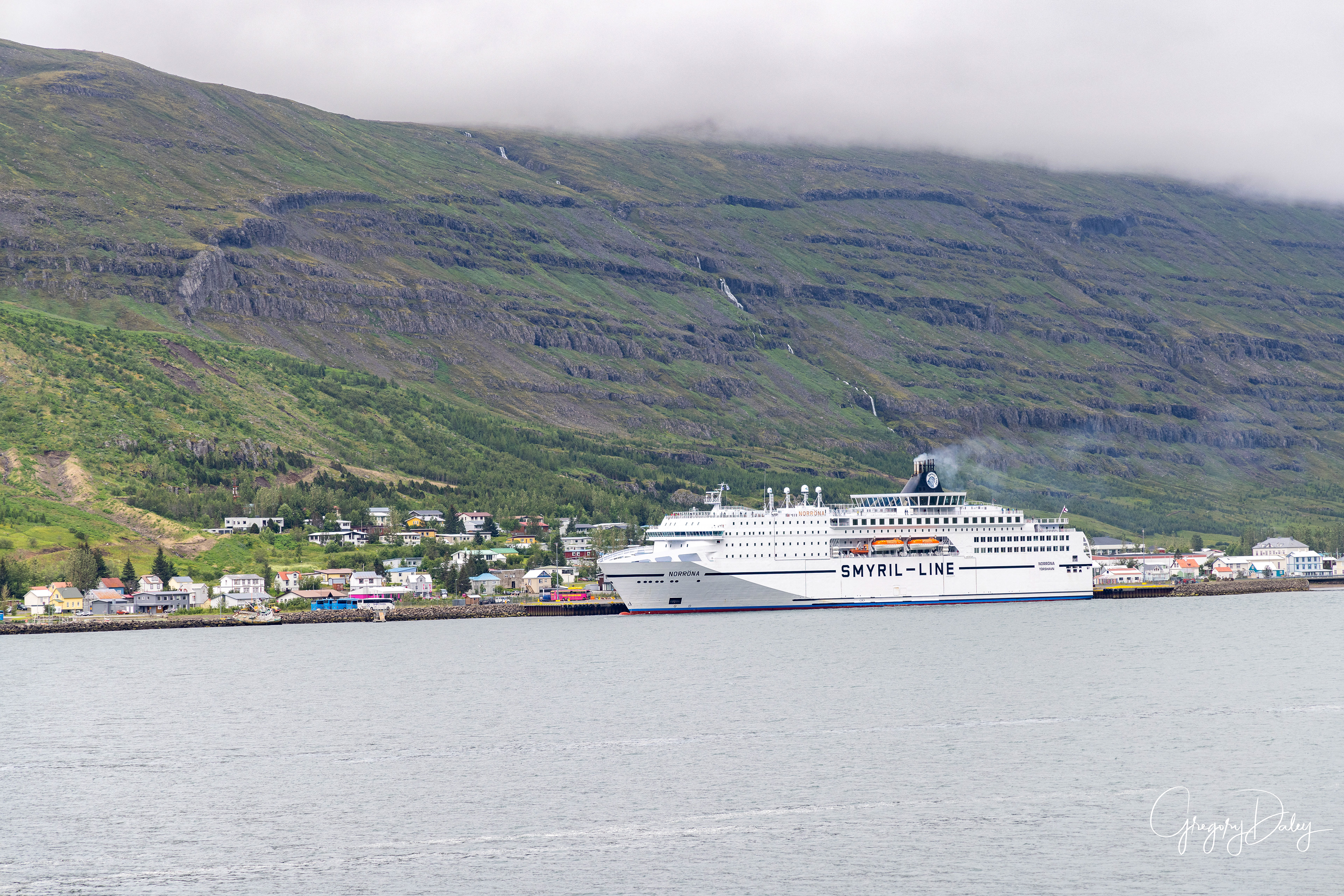
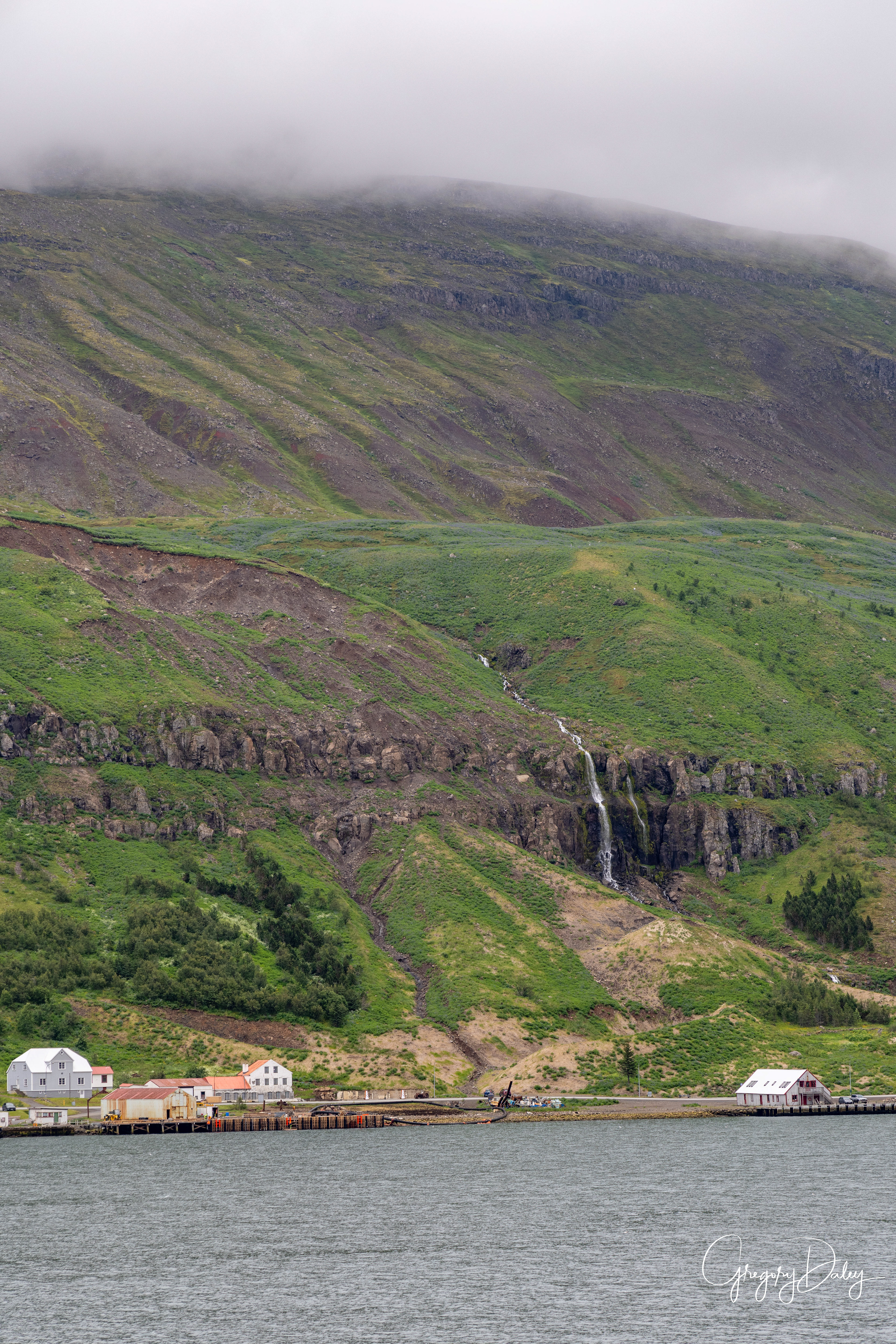

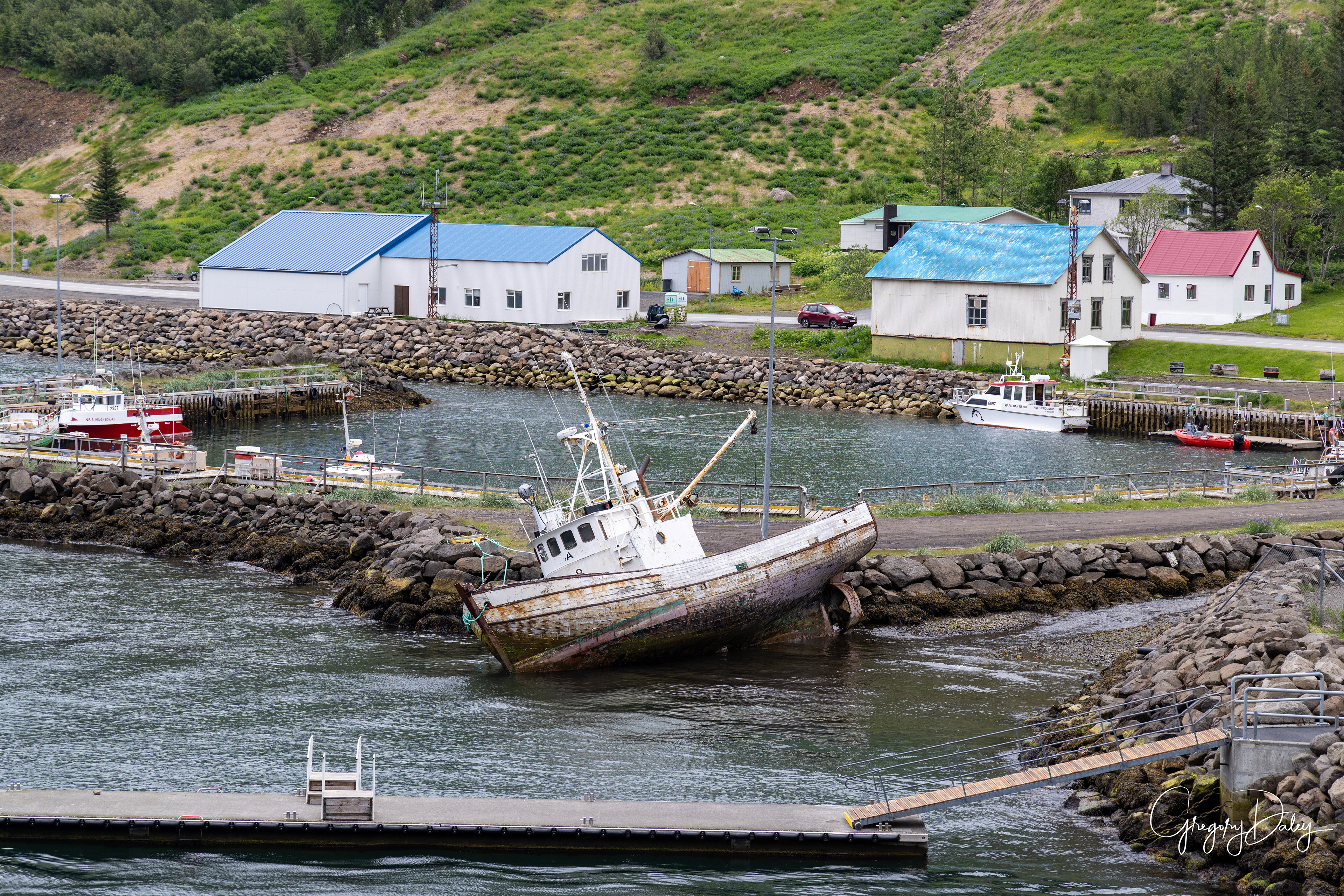
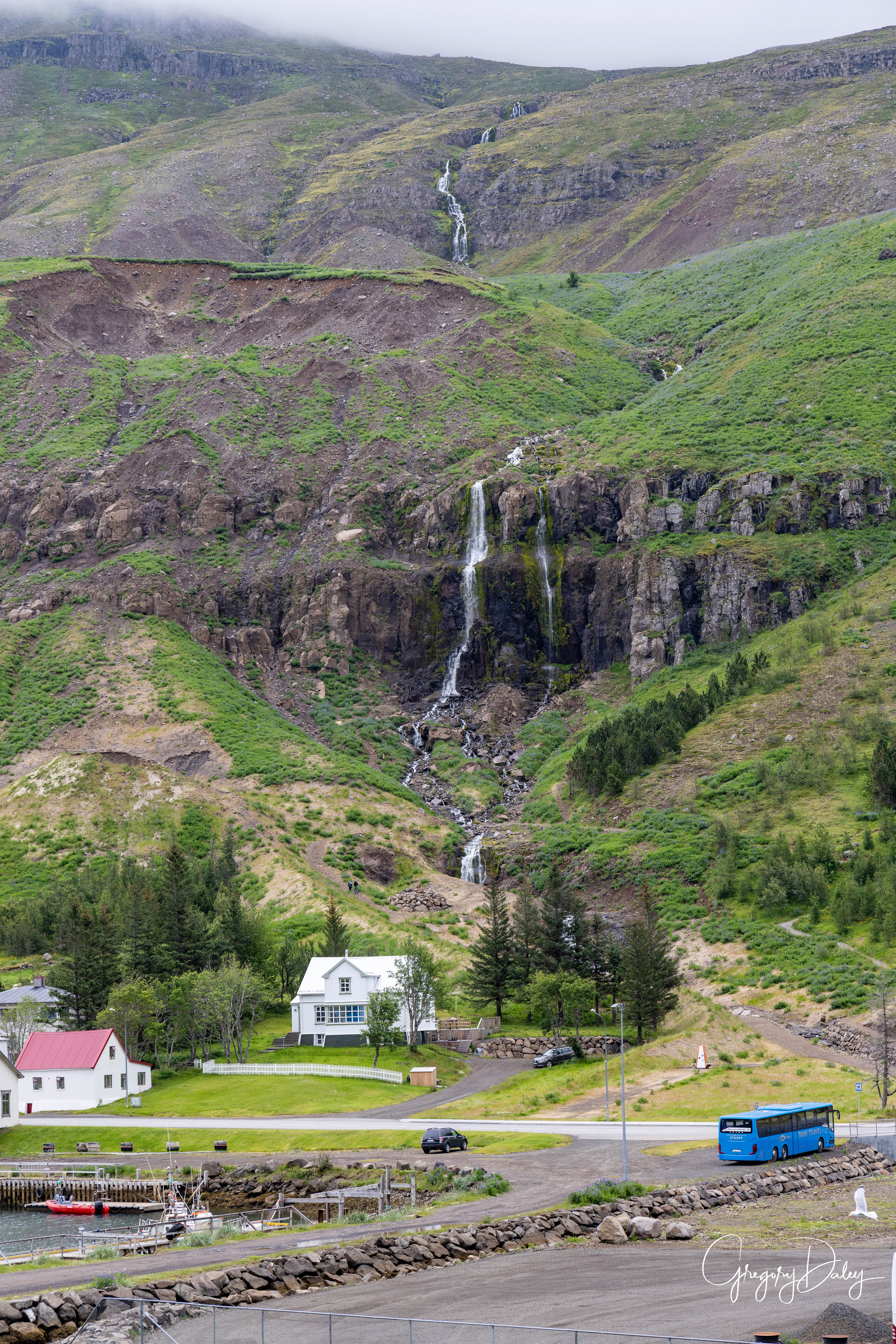
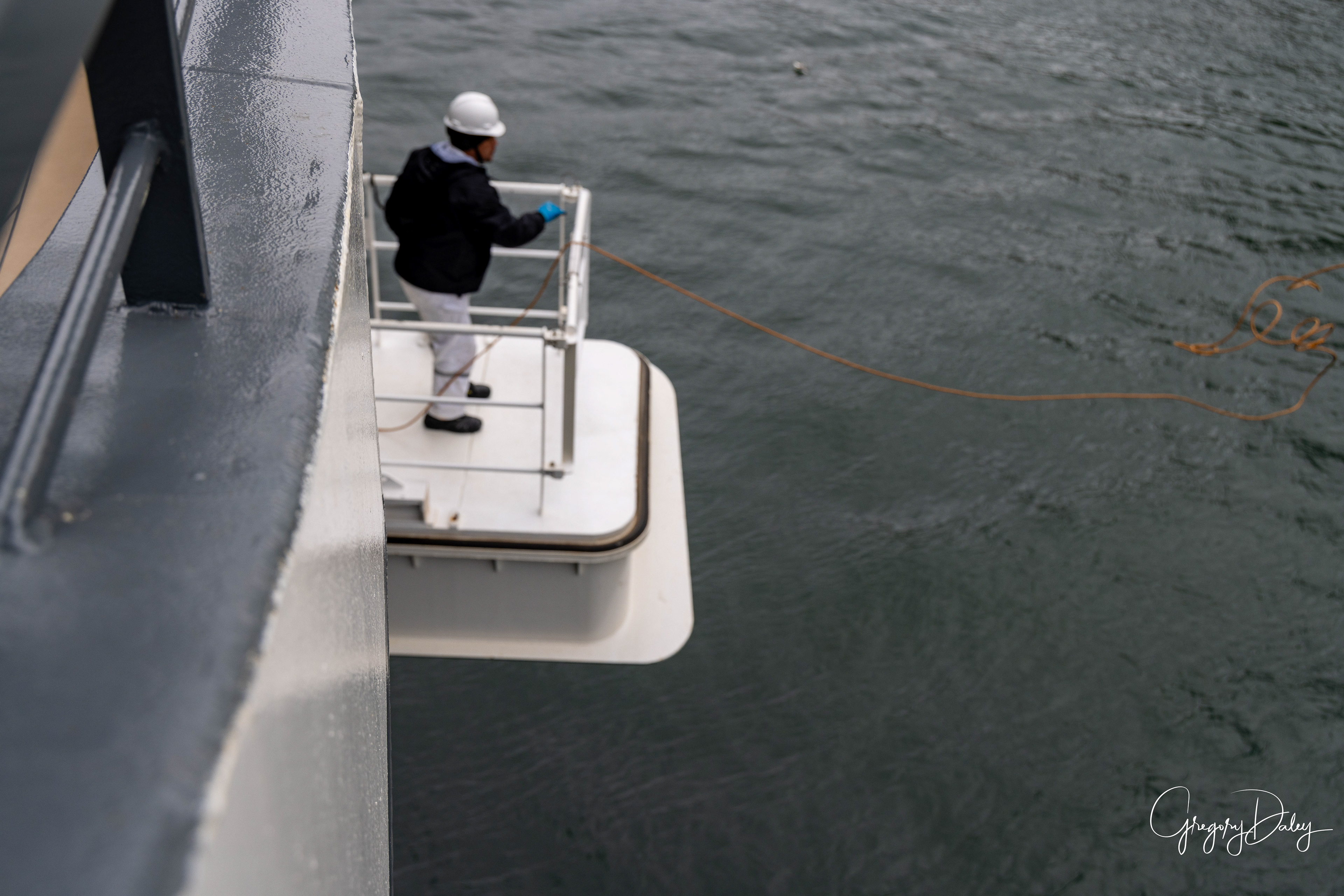

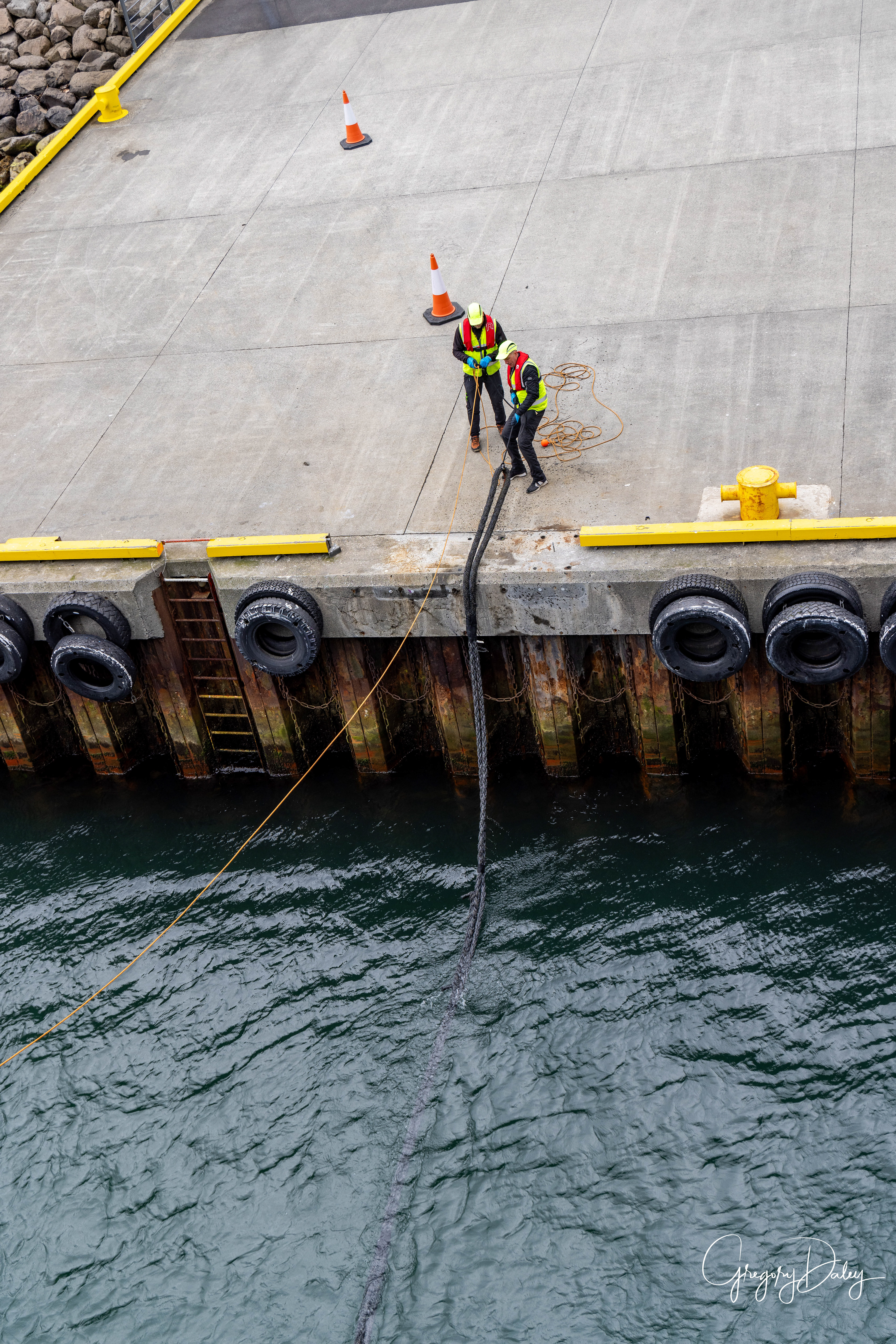
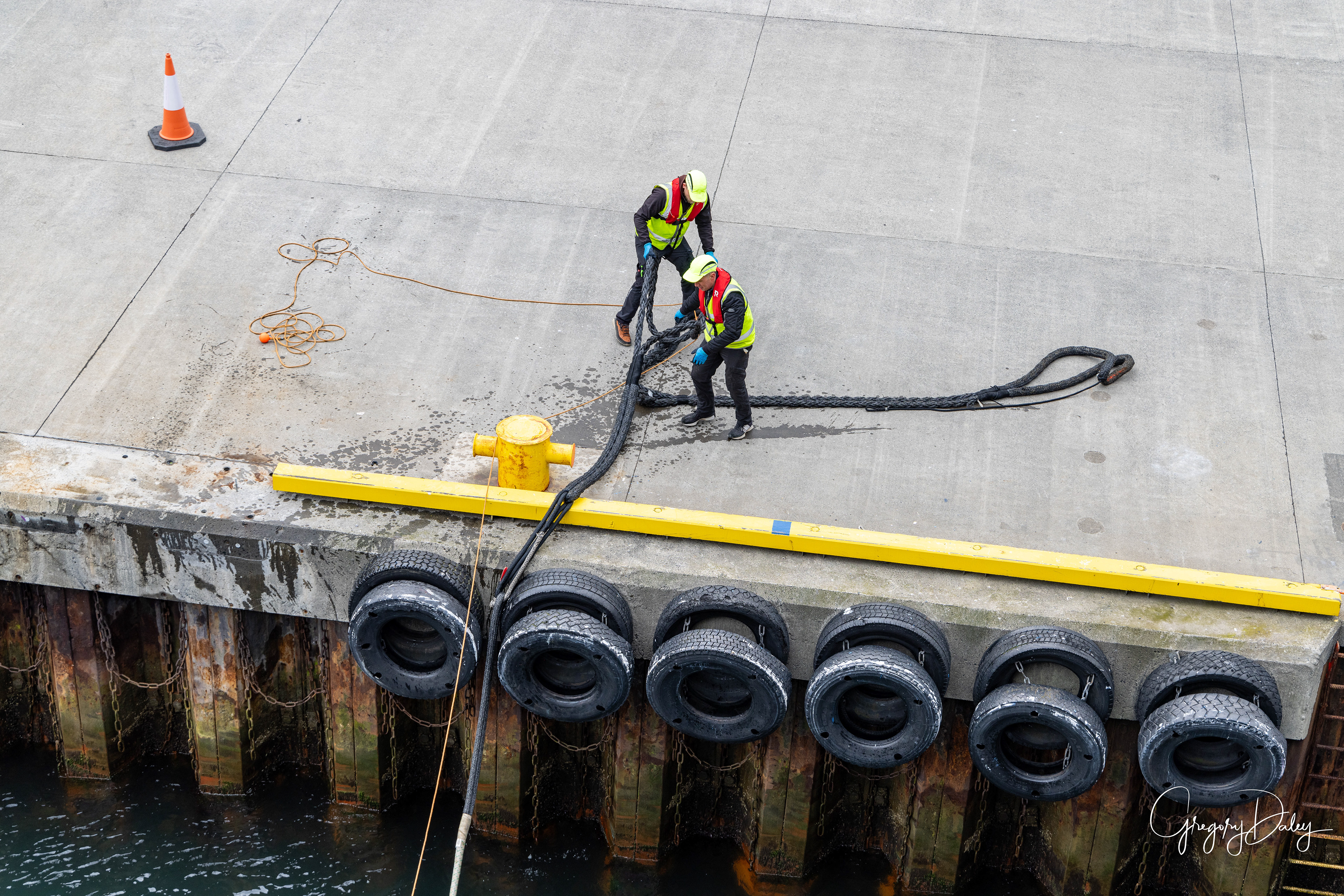

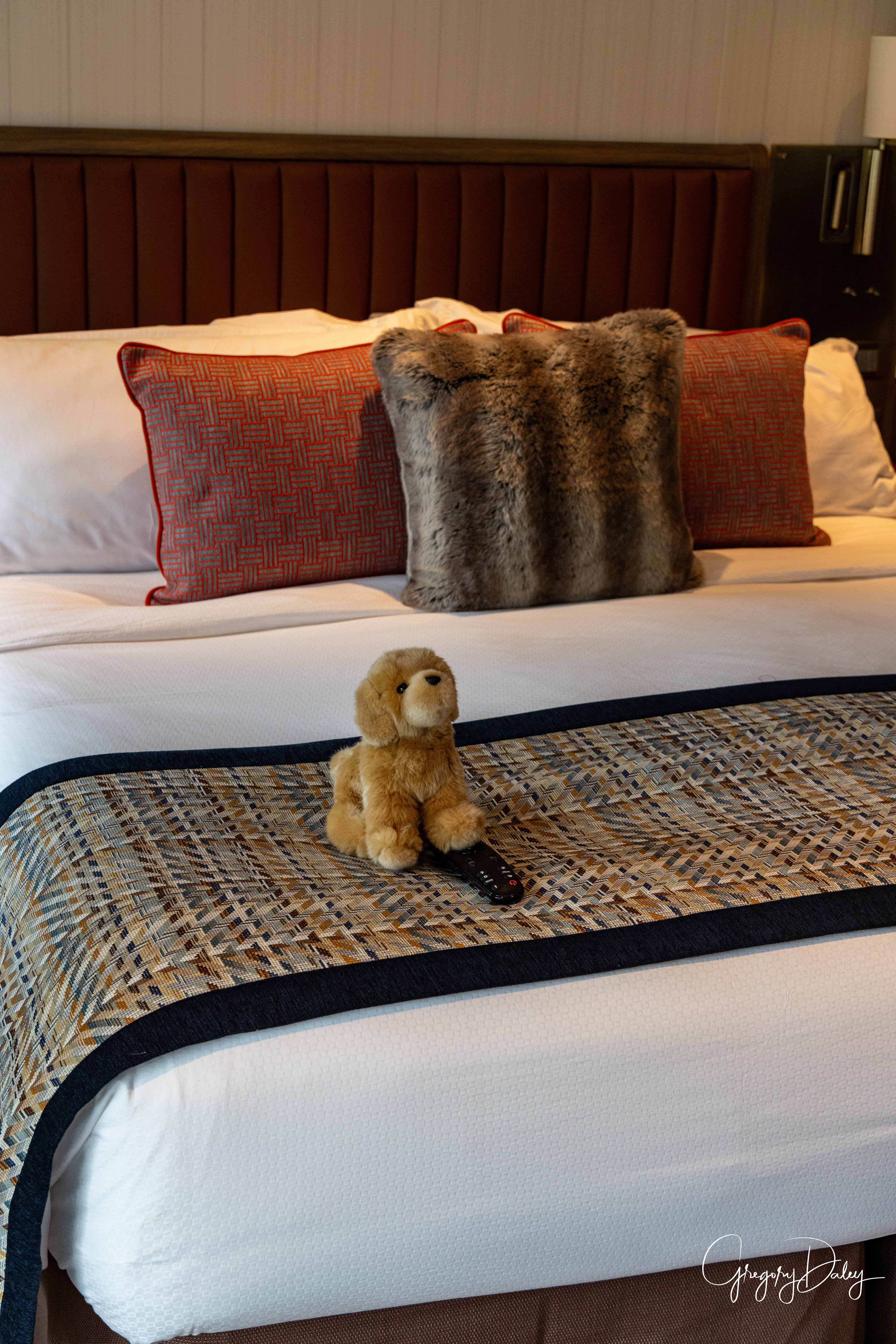




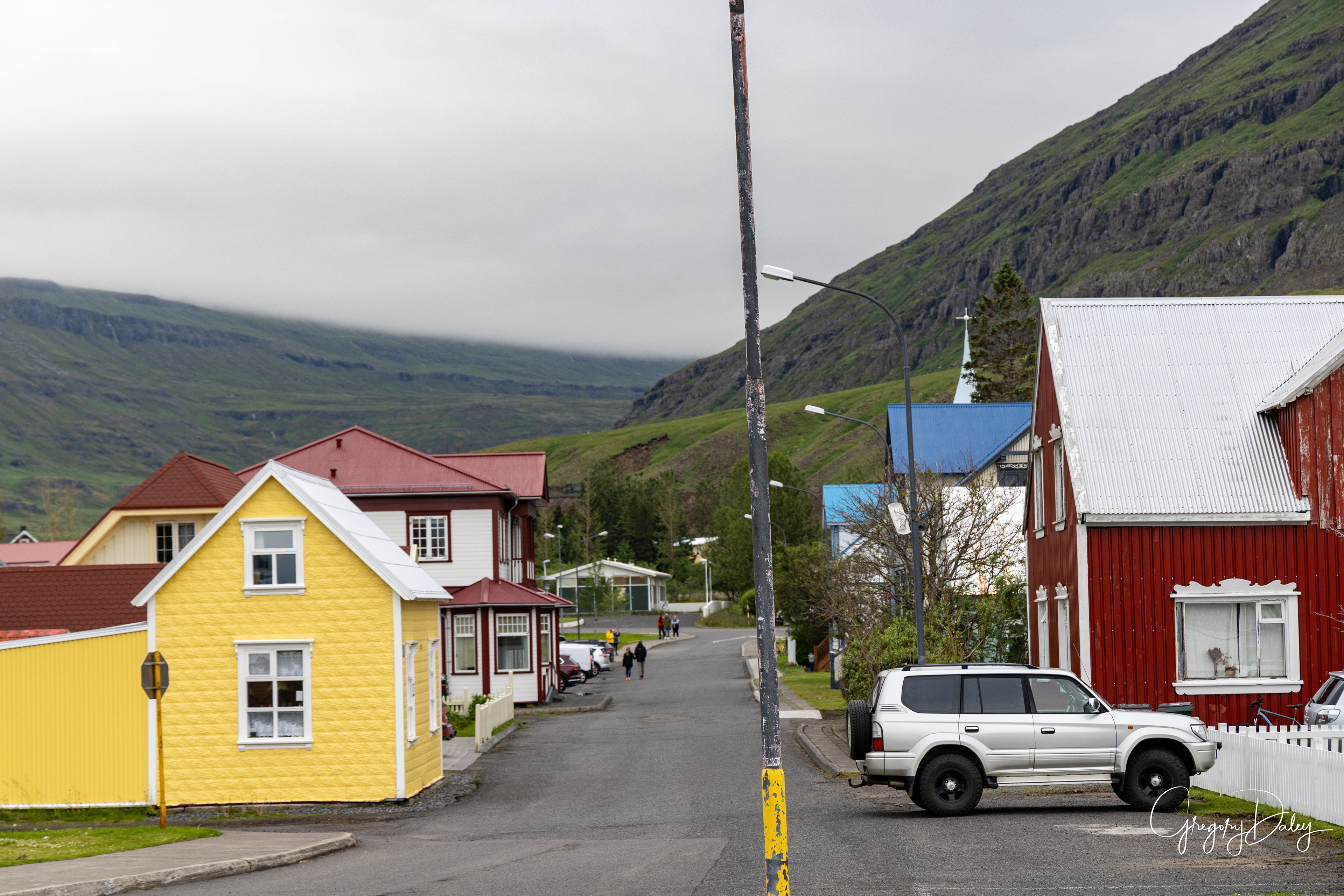
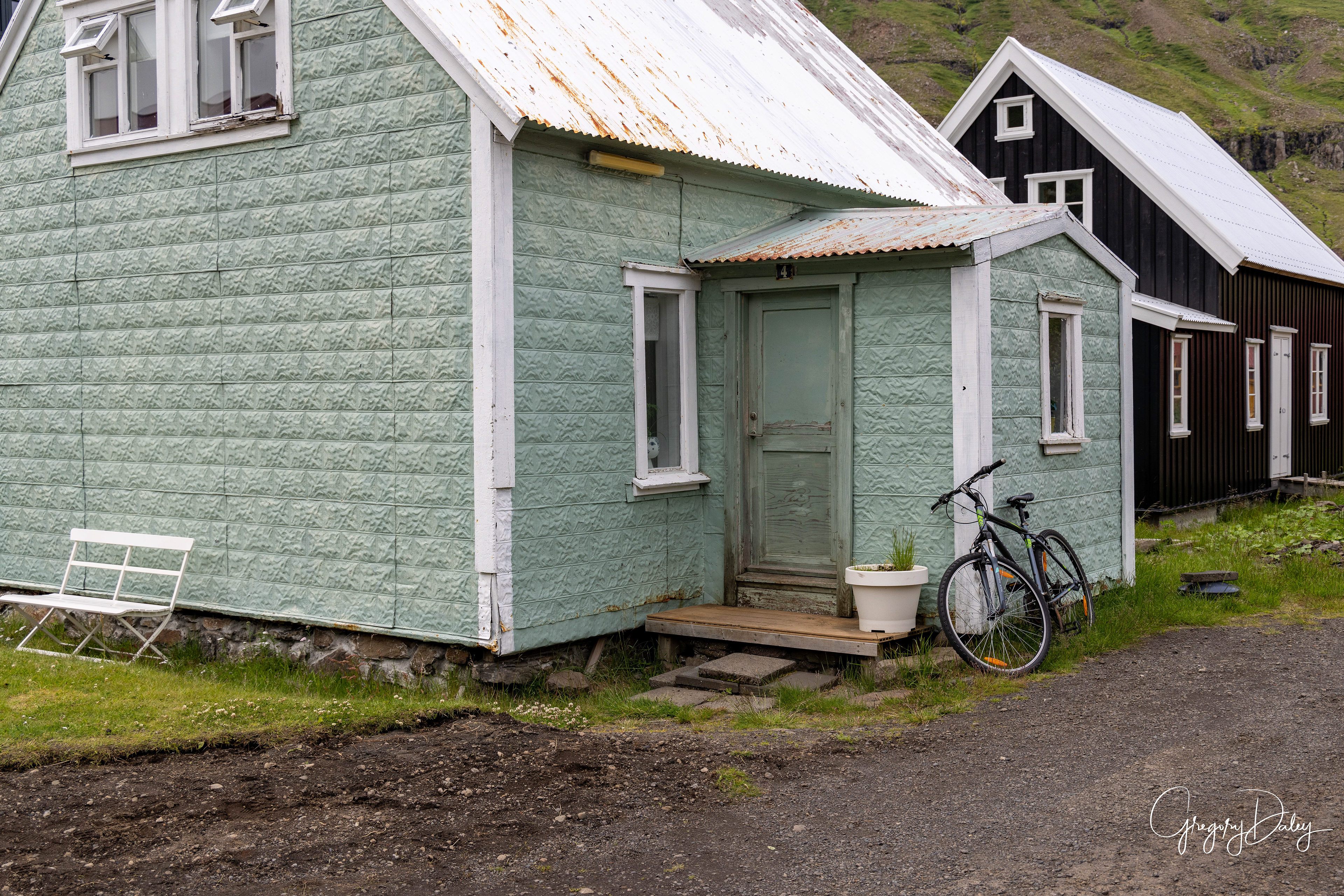


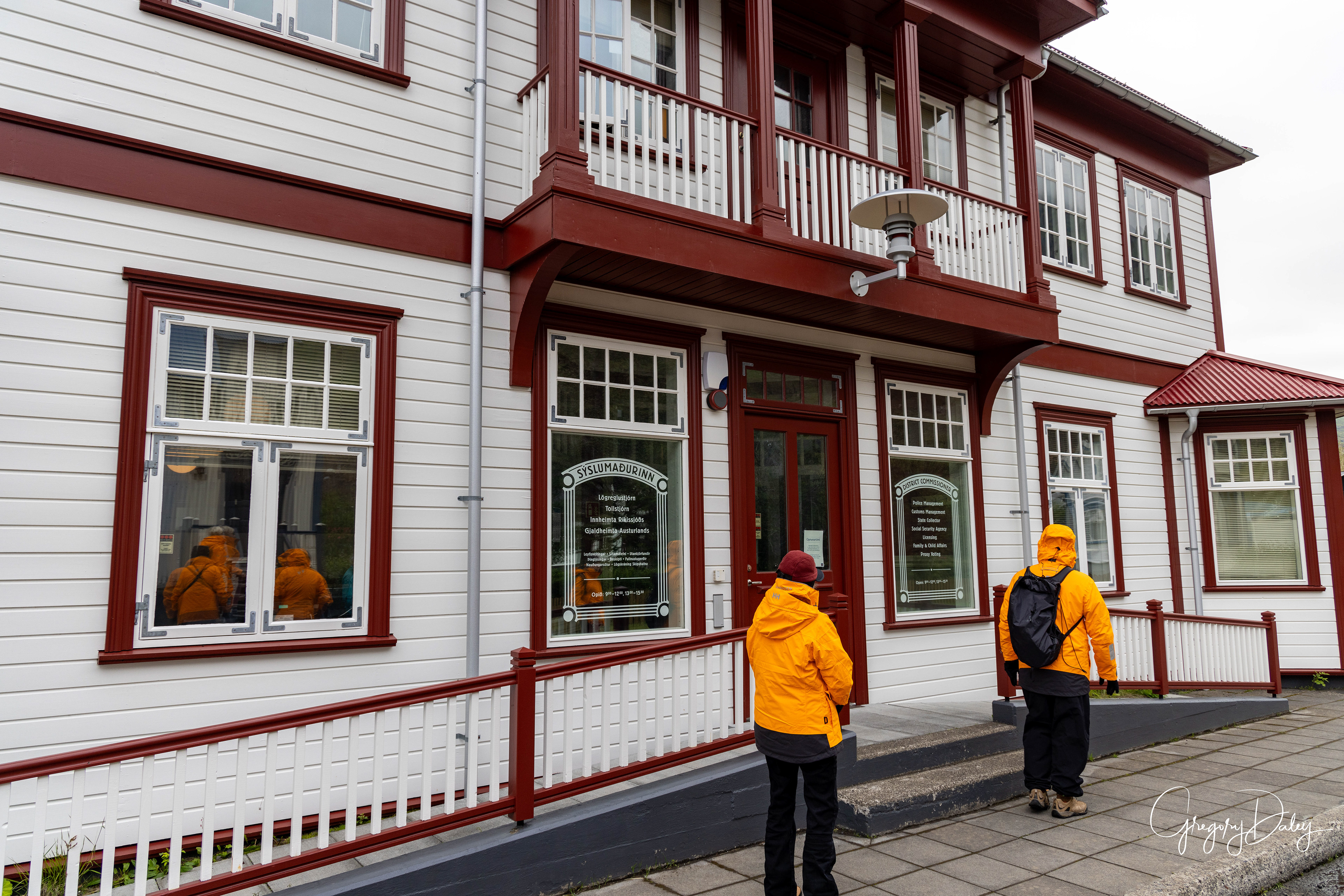
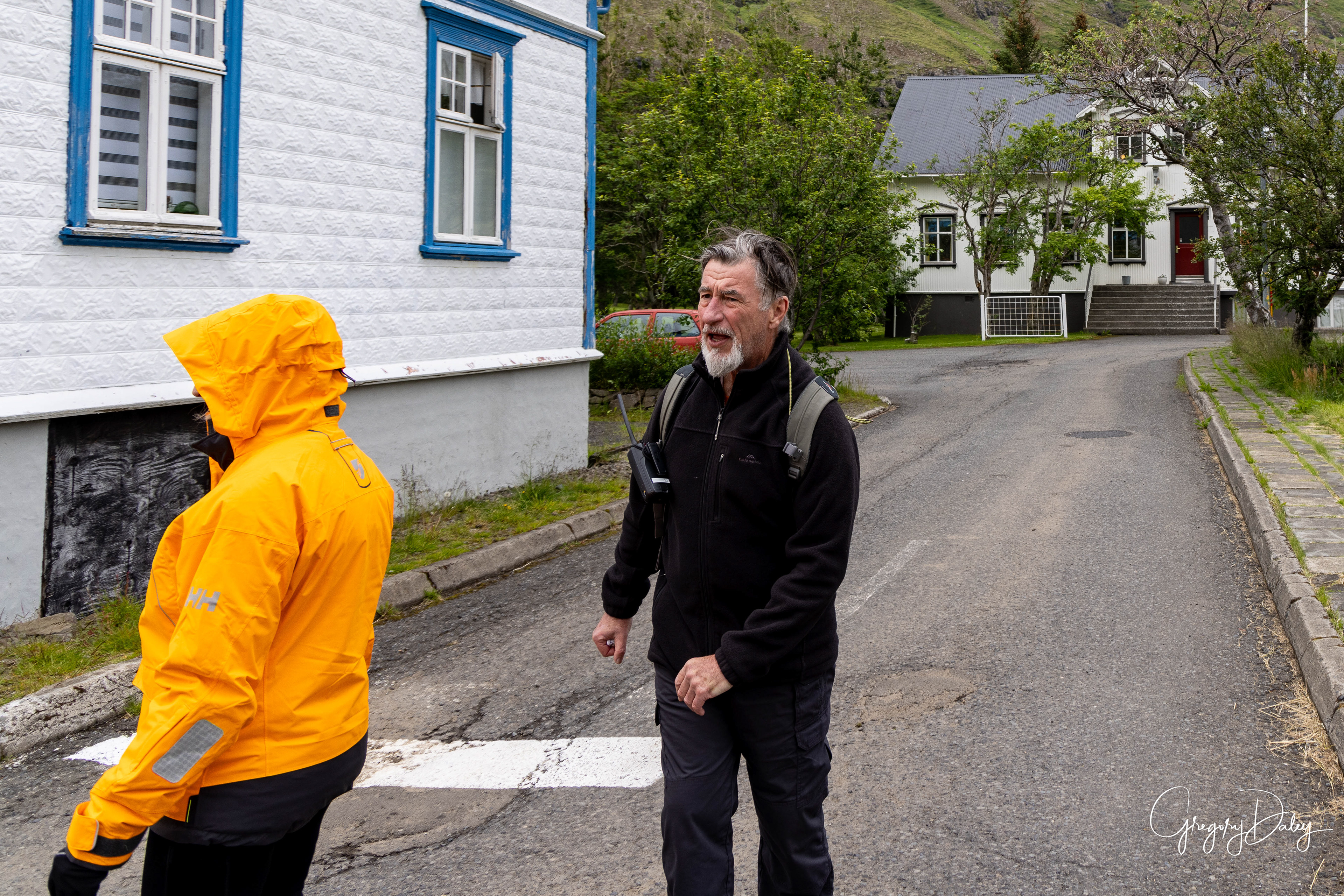

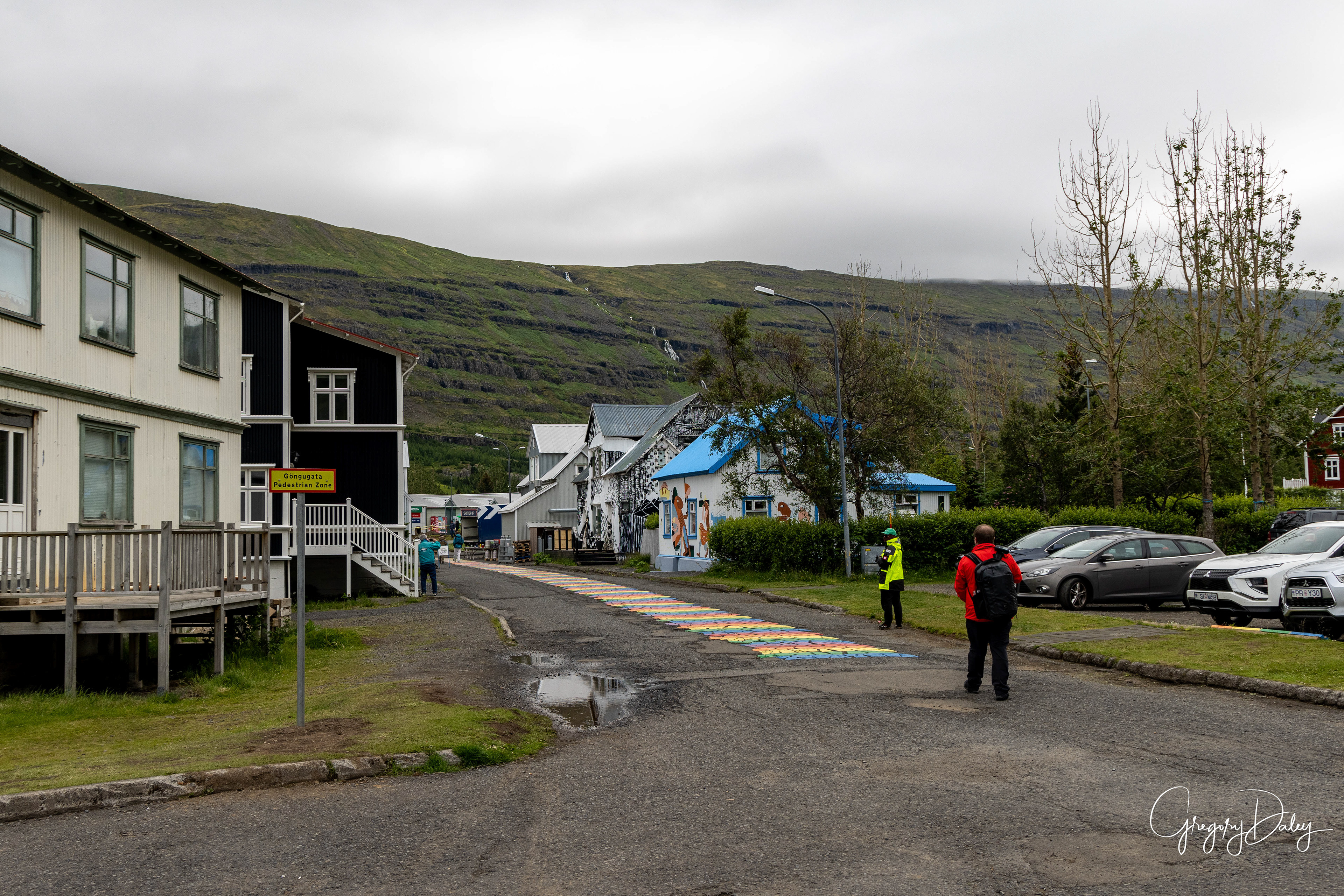

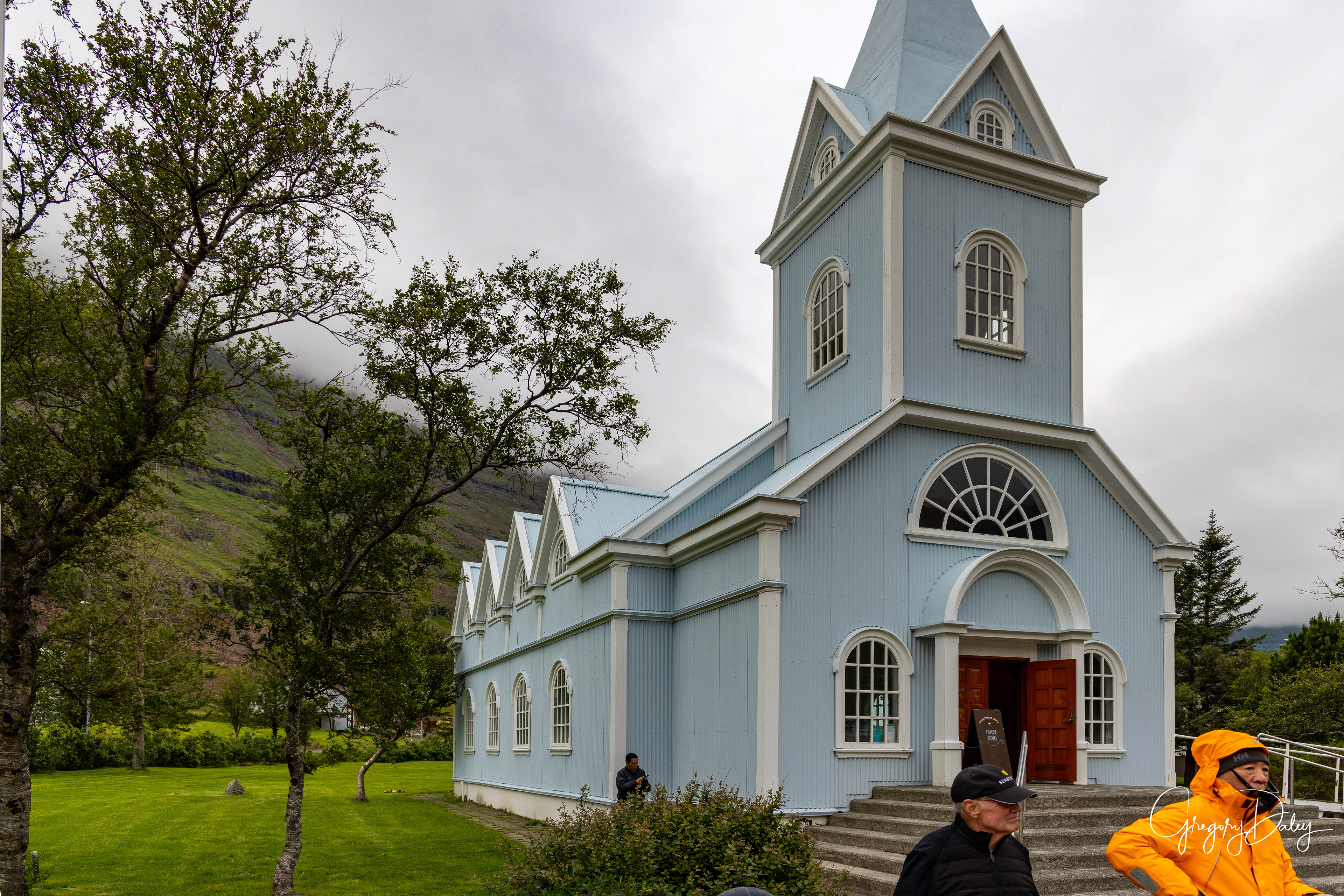

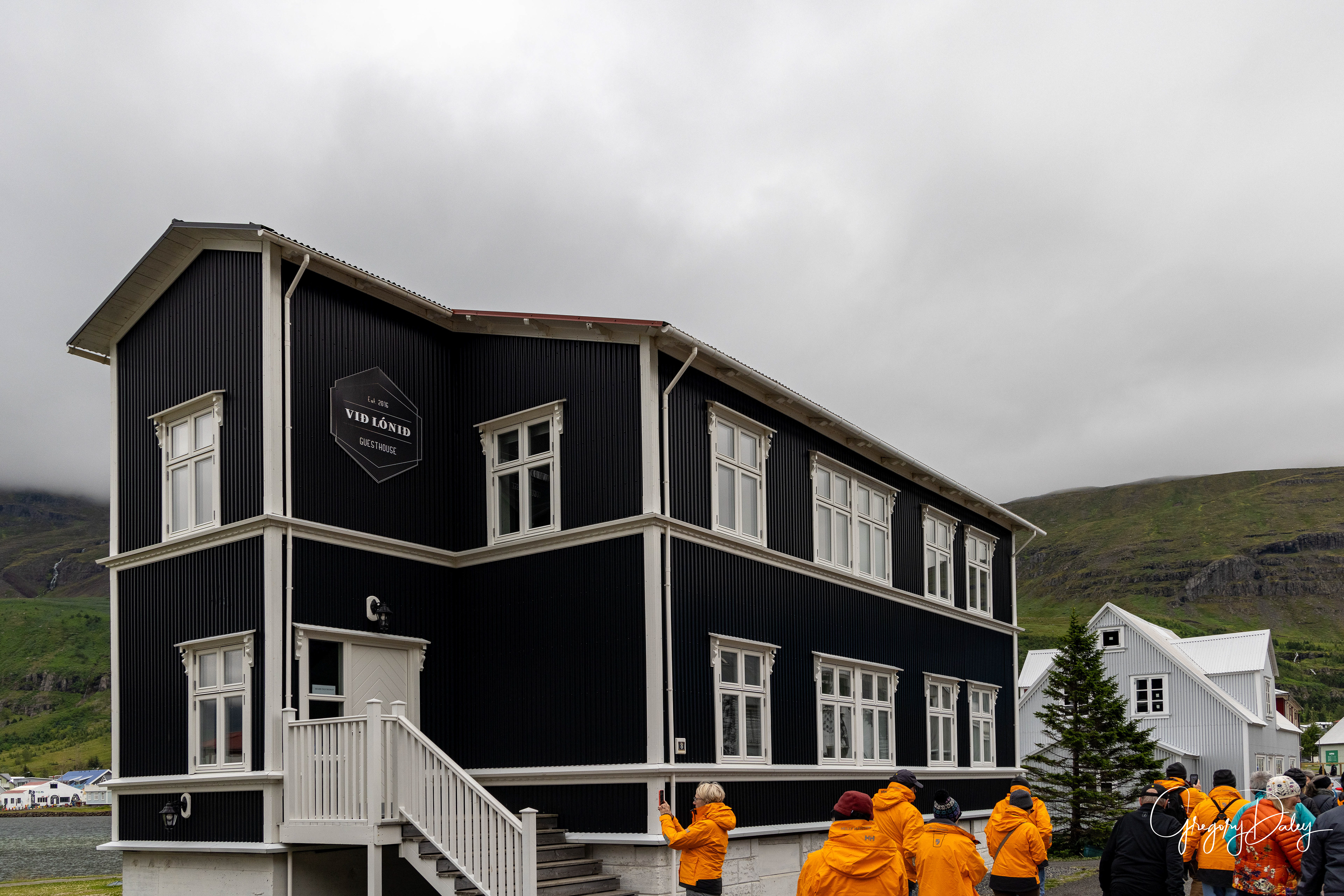

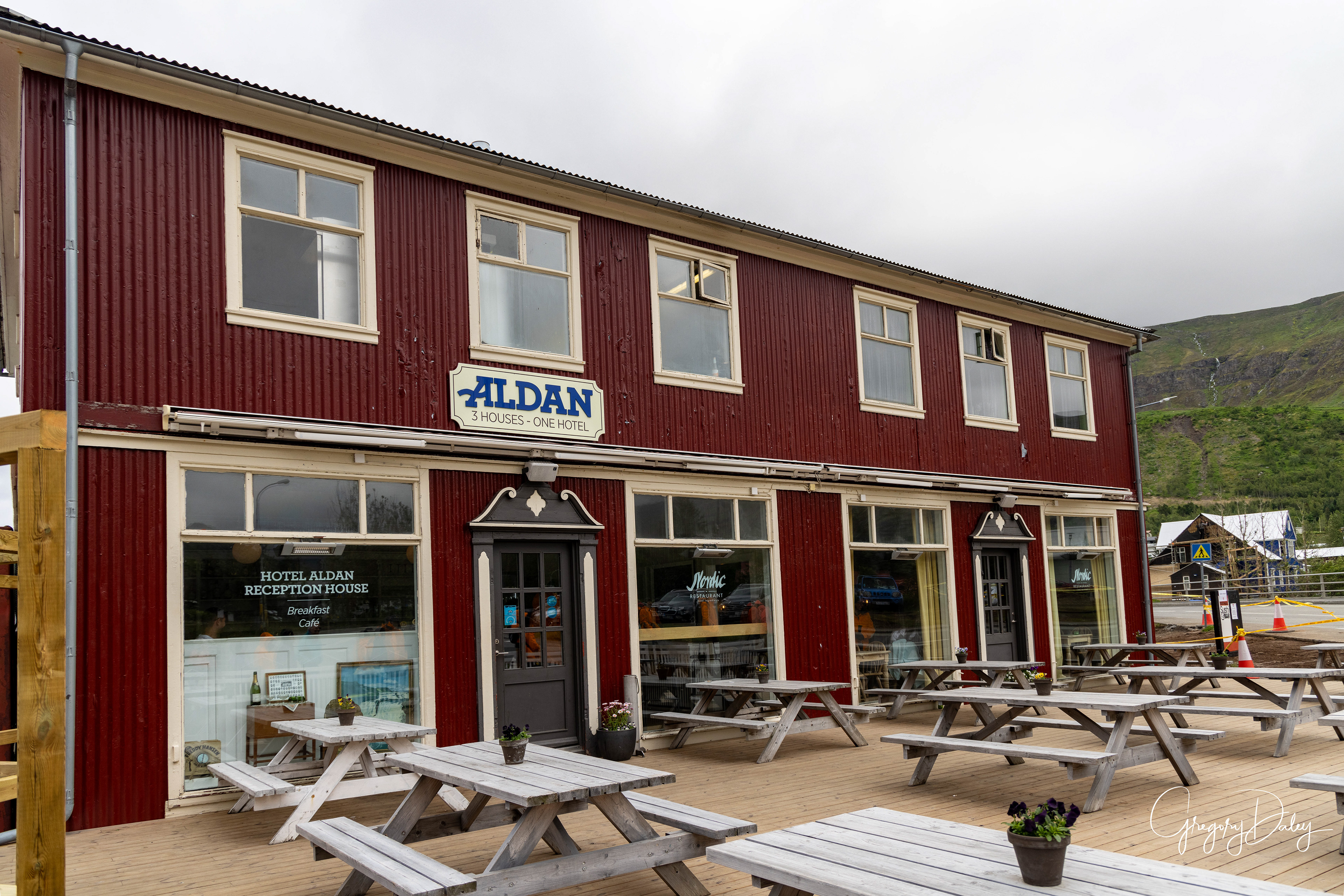

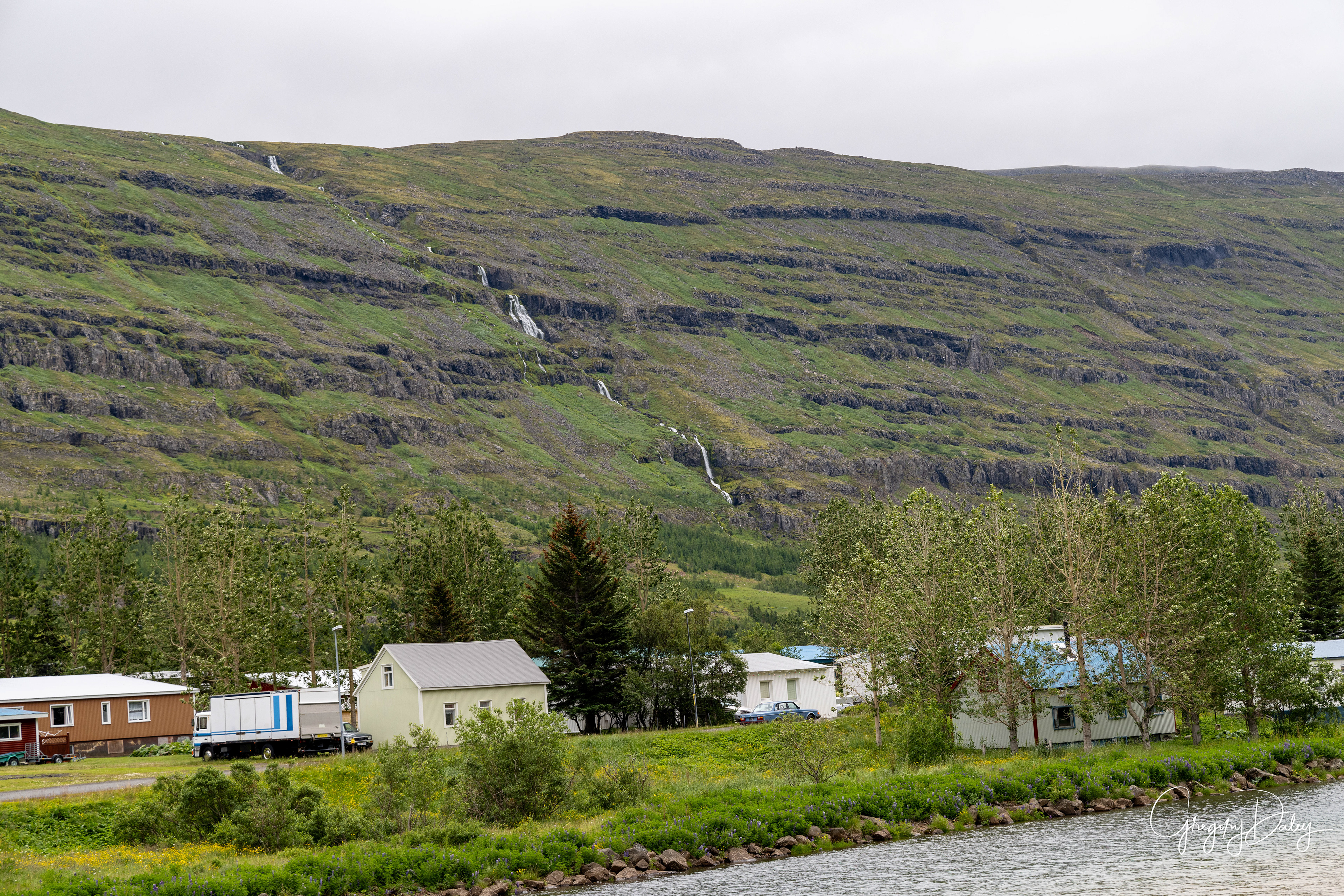


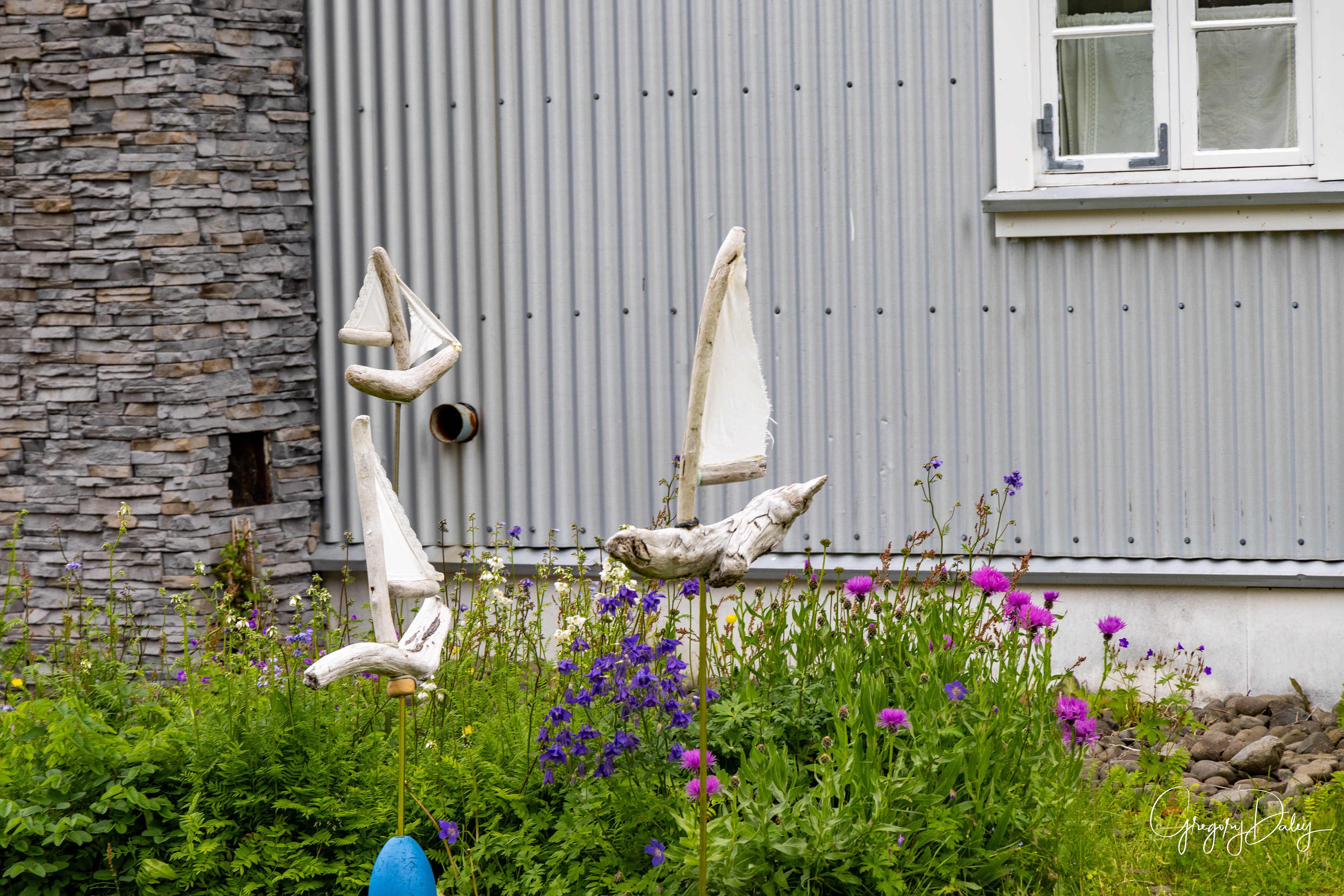
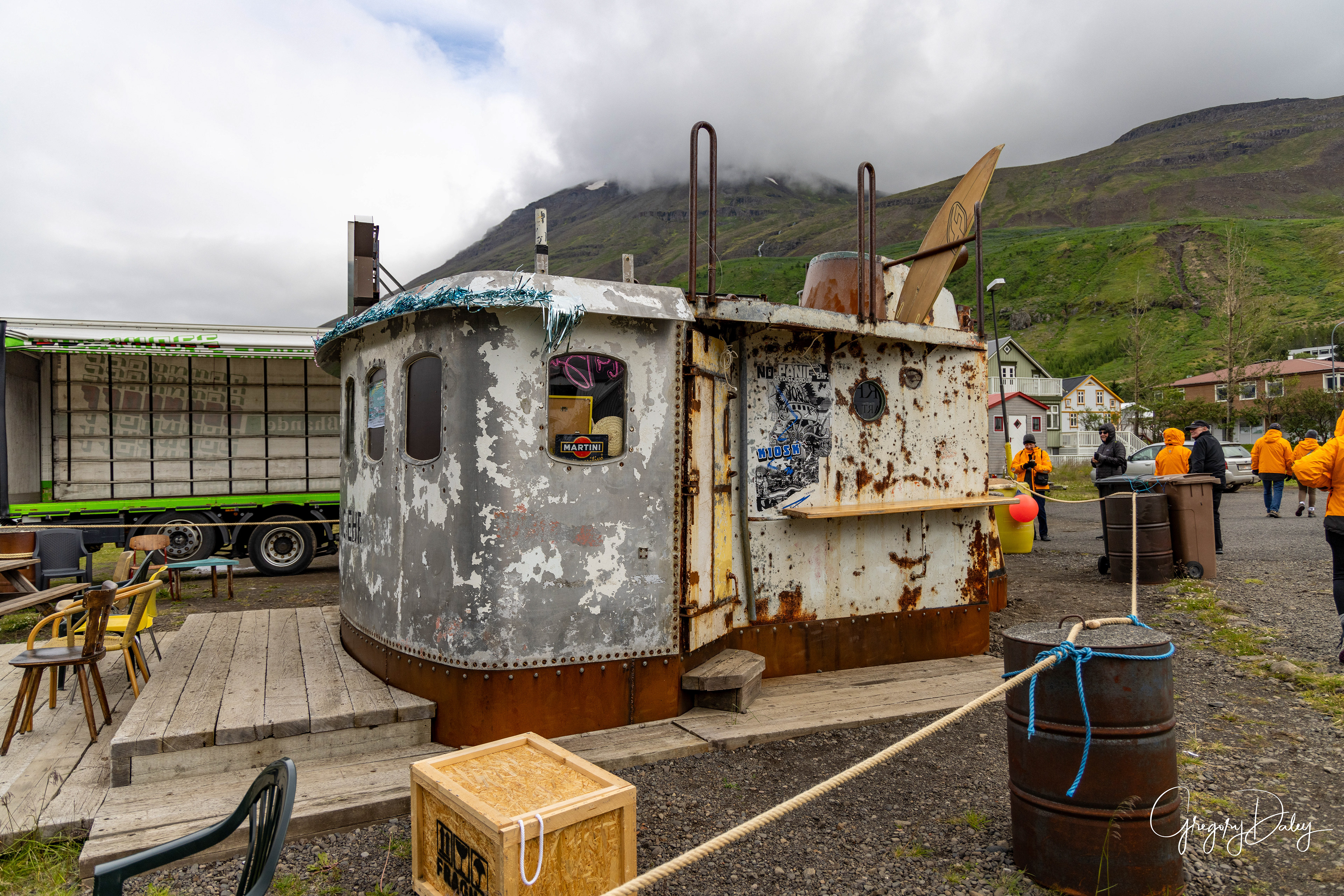
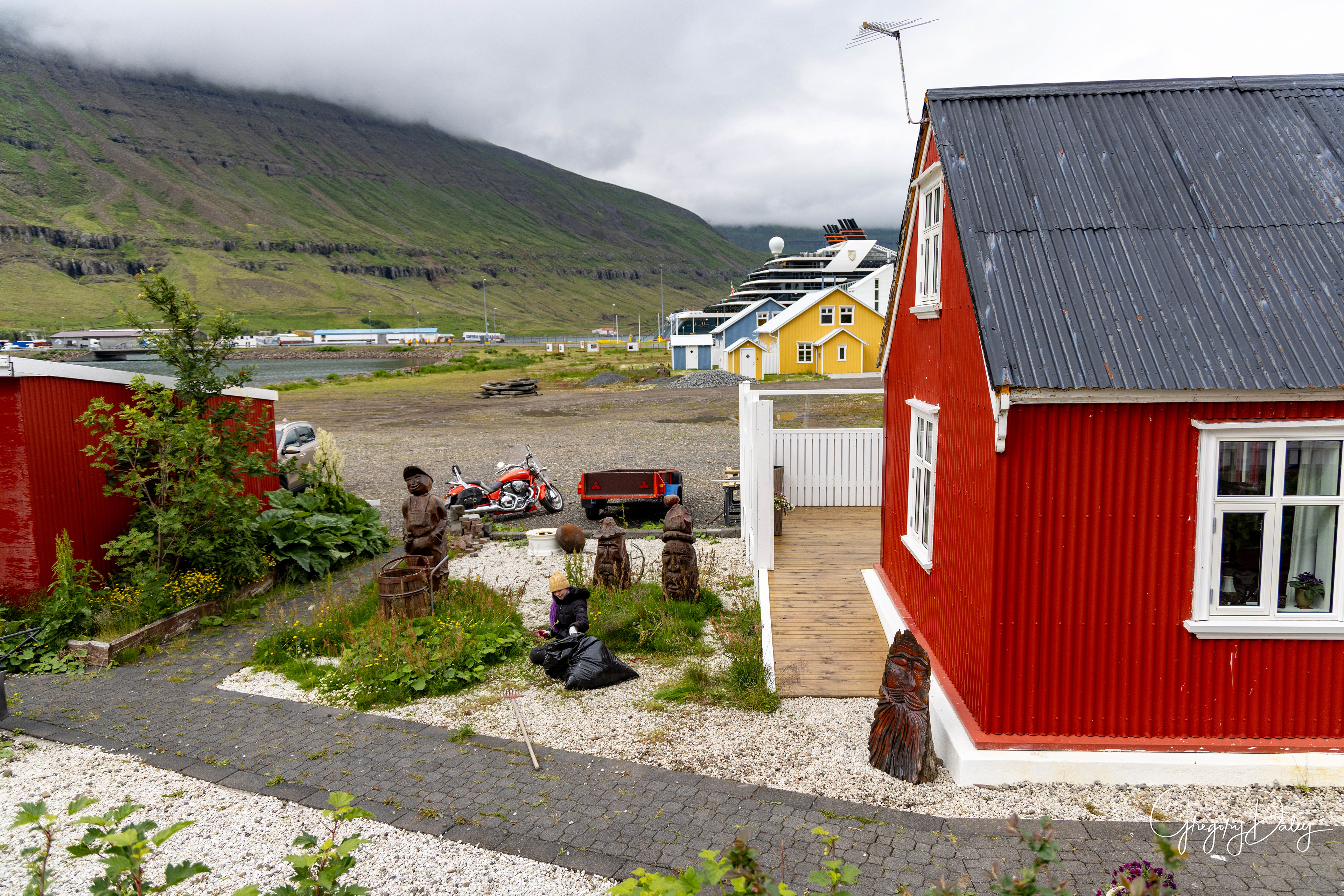
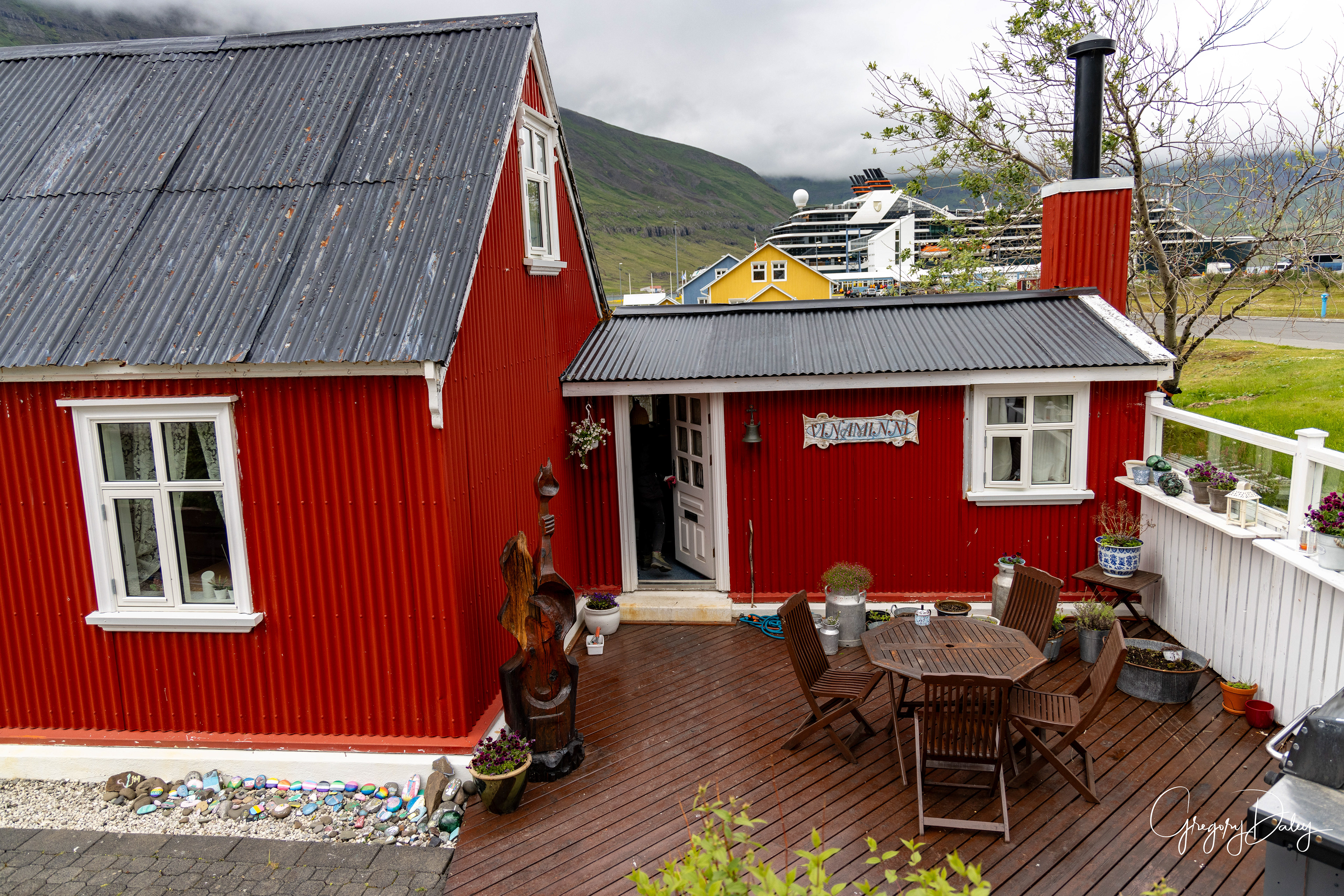

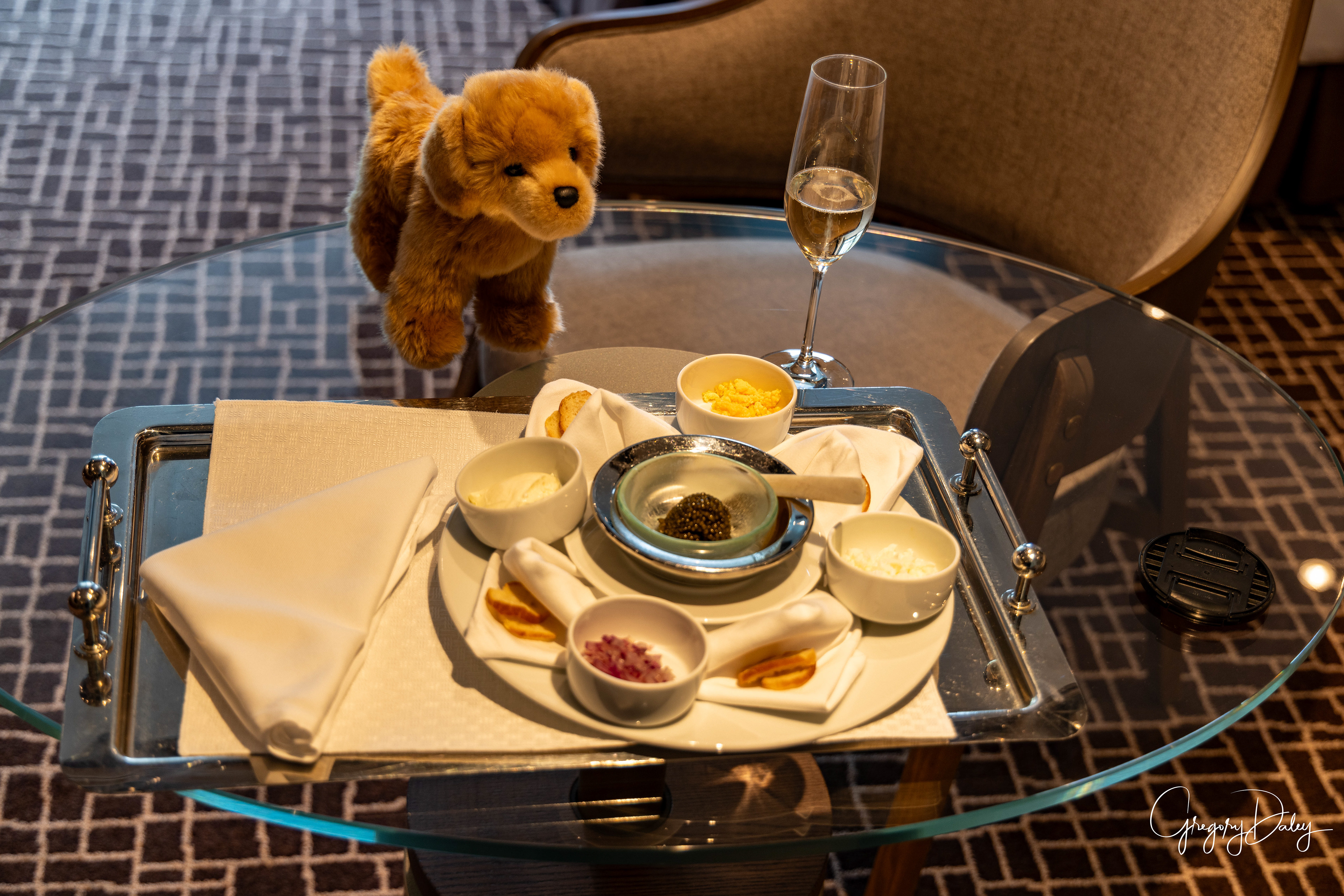

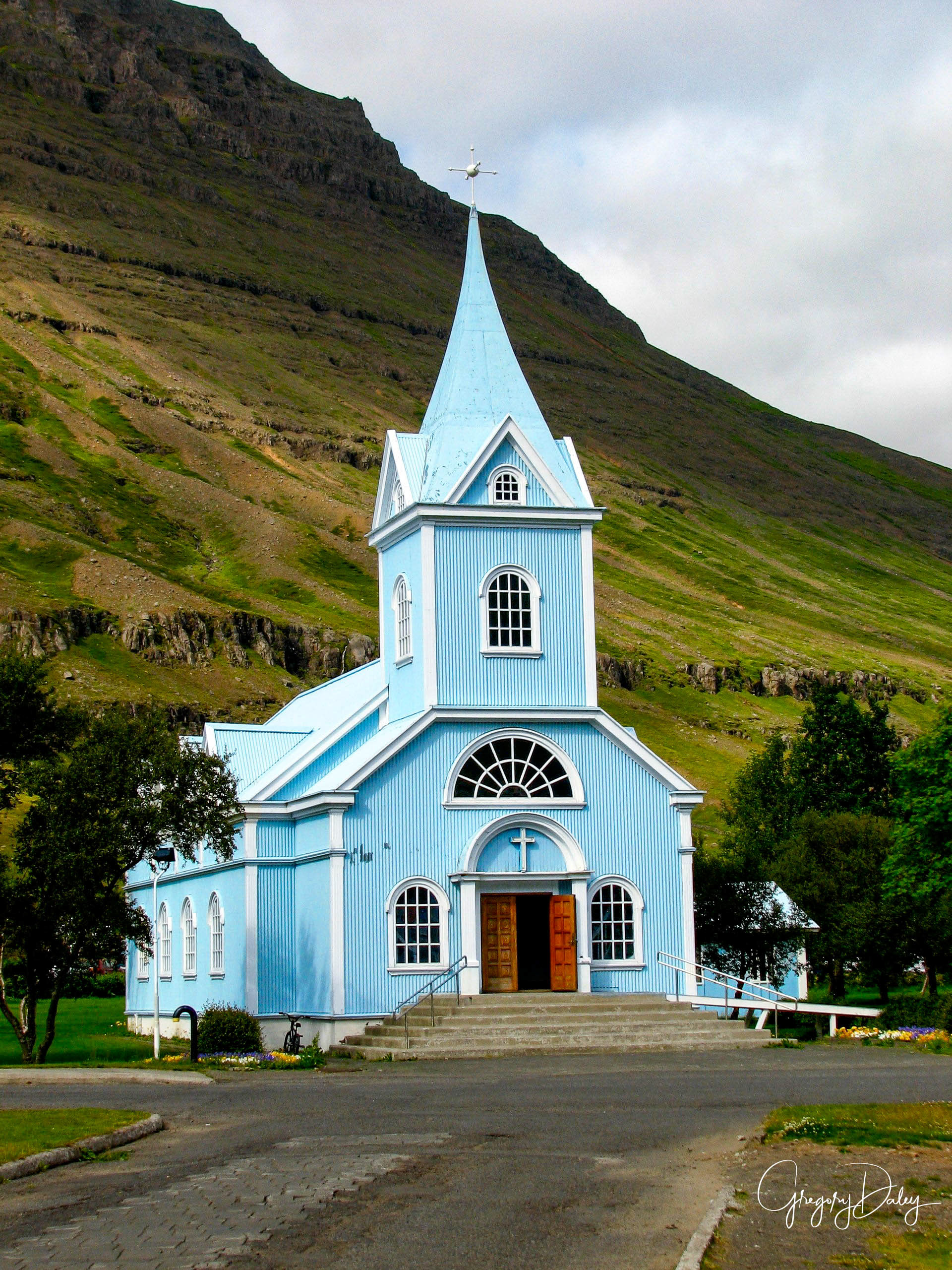
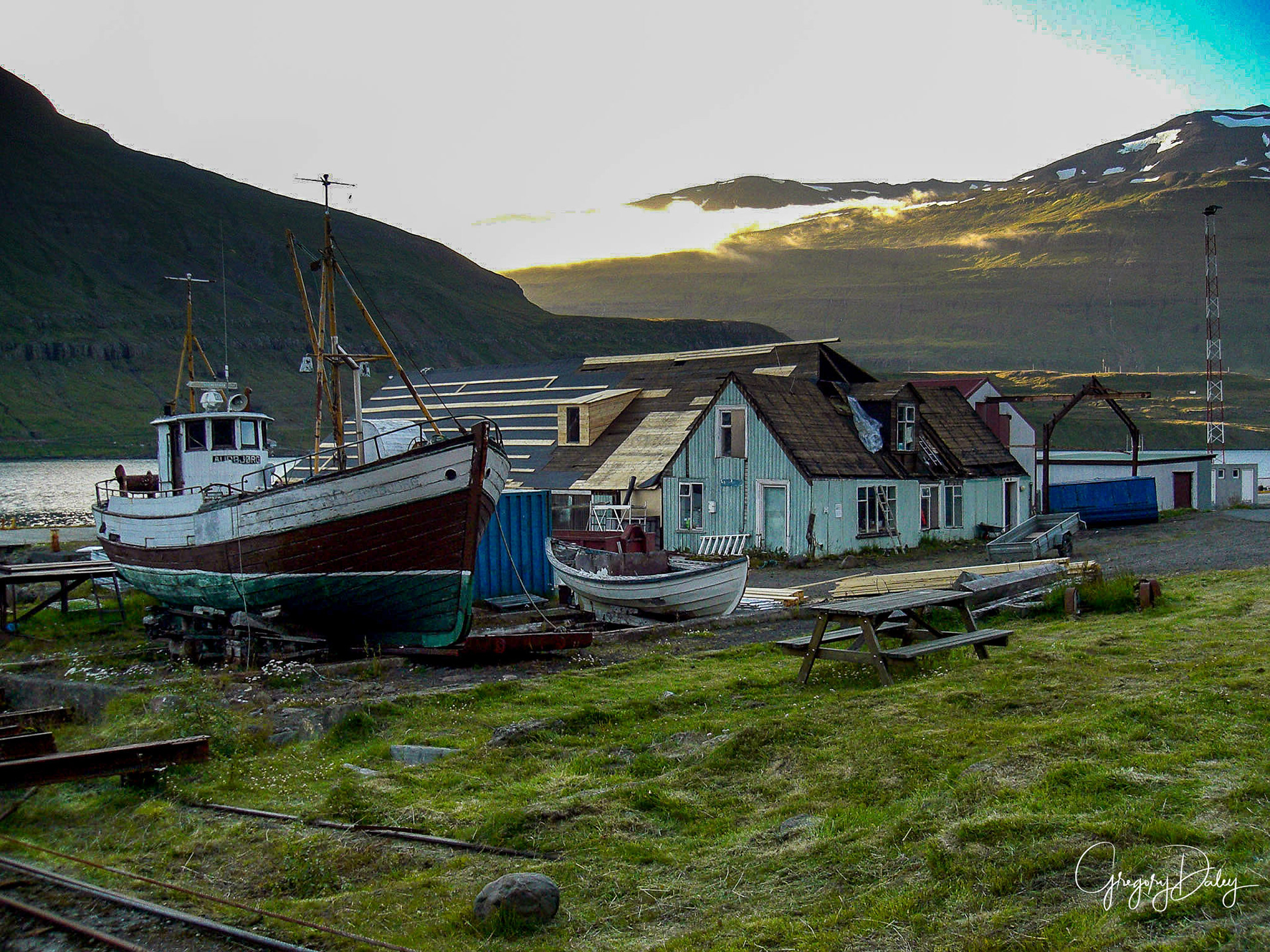
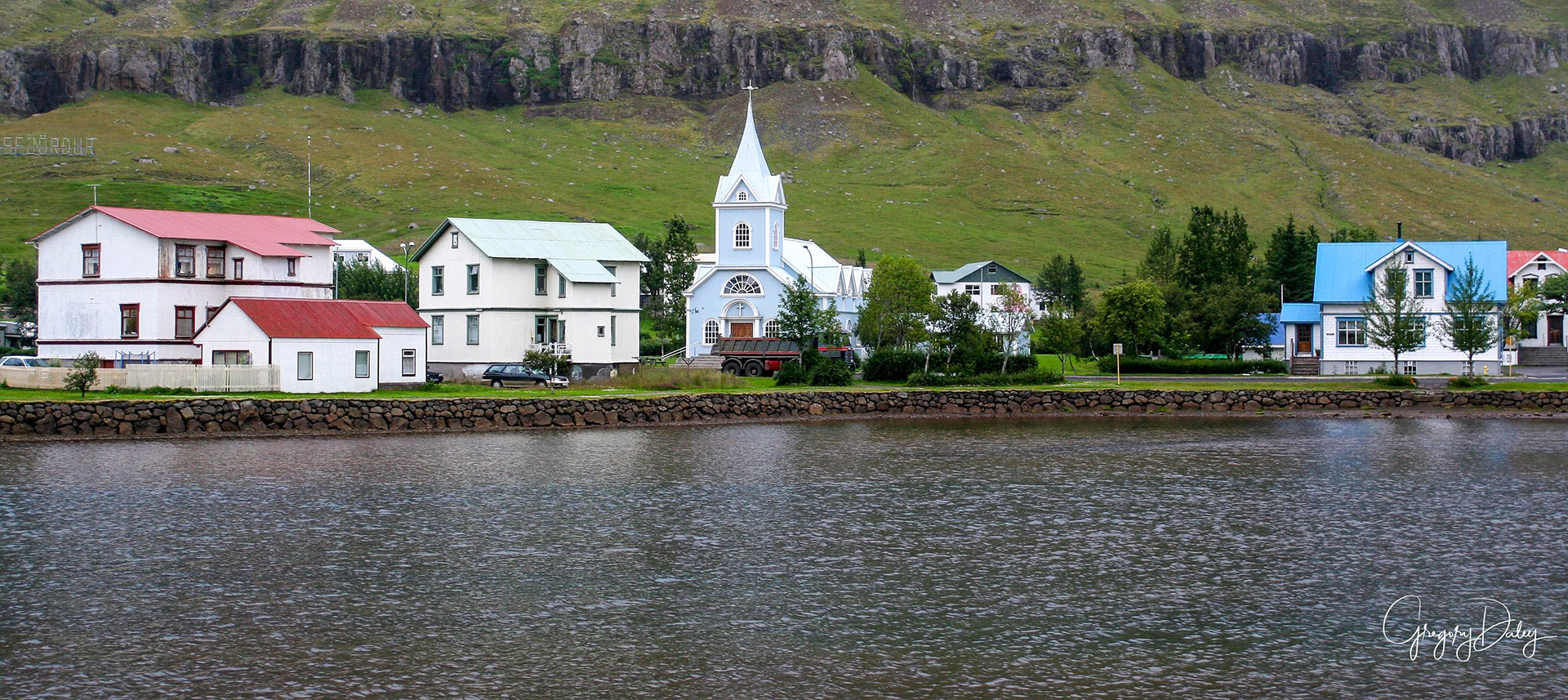
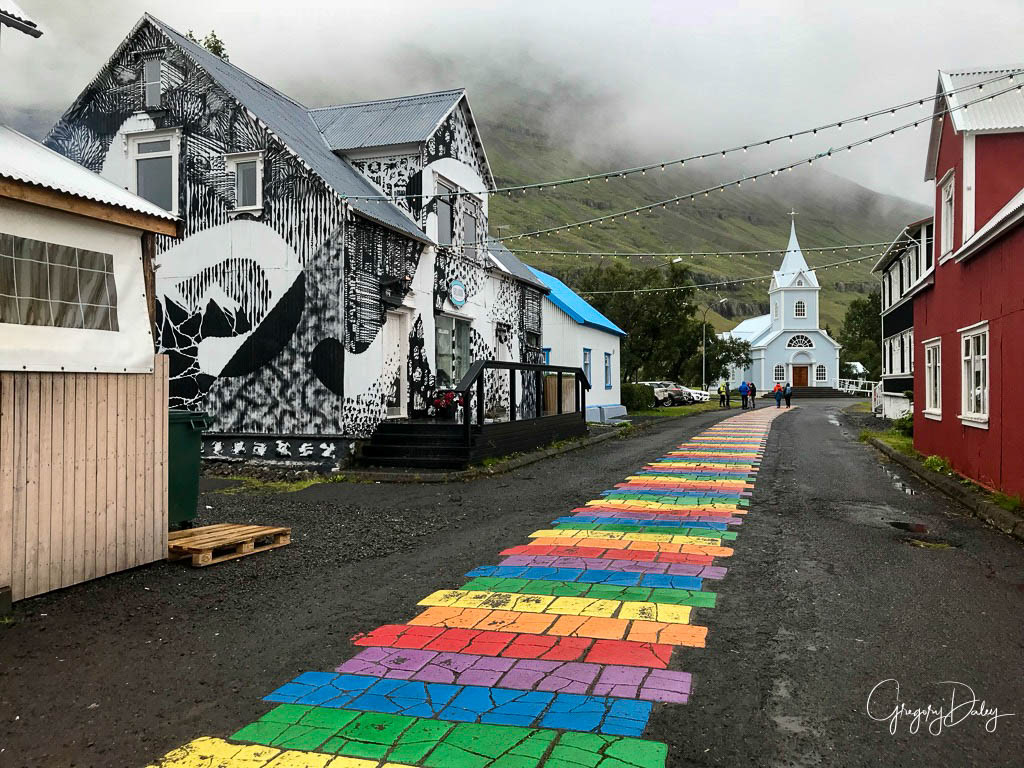


Thursday, 7/6/23, Seydisfjordur, Iceland
Latitude: 65.26° Longitude: -14.00°
What is it about Iceland? Perched betwixt two continental plates, geologically complex and, above all, scenically bewitching, it consists of a succession of vistas that makes one want to break into spontaneous applause.
This morning, we were treated to yet another topographical encore. The ship arrived at Seyðisfjörður, a narrow, twisting fissure that extends deep into eastern Iceland. The low cloud and drizzle of the previous day had passed, and fair conditions prevailed. As the ship docked at the small town of the same name, everyone was champing at the bit for a chance to debark and explore.
Three alternative shore excursions were offered. One was a guided walk around town. Colorful clapboard houses were scattered about a small anabranch of the main fjord. Many had been decorated as befitting the whim of their owners - this being a recognized hot spot within the Icelandic arts community. The most obvious public artwork was the rainbow path leading to the church.
Other attractions were just a short ride away. Some guests visited one of Europe's pioneer organic agriculture enterprises. The Nordic climate is not conducive to the growth of many Mediterranean vegetables and grains. Yet, this farm - one of the northernmost in the world where grain is grown - is leading the way in organic agriculture. Hot water is everywhere in this country, and after visiting the farm, we could take full advantage of a restorative soak at the thermal spa pools at nearby Vök.
The third and most popular option was a visit to the Skálanes nature reserve. This private research center aims to encourage investigation into and preservation of Iceland's natural environment and cultural legacy. De-stocked ex-farmland and re vegetation work to restore some of the country's lost forests serve as a model for future land use and sustainable tourism. Most importantly, there were also Atlantic Puffins!
Background
The remote town of Seydisfjördur is perched at the end of a narrow twisting fjord in East Iceland. A very picturesque village of 700 people, it is known for its thriving arts scene and large number of resident artists. Tourism is on the rise as well, as its natural setting of mountains and waterfalls is simply breathtaking. Surrounded by impressive 3,560-foot-tall snow-capped mountains, Seydisfjördur is home to the Technical Museum of Iceland. It was settled by Norwegian fishermen in 1848 and quickly became an important trading center between Iceland and Europe. It is known throughout Iceland for its colorful Norwegian-style wooden houses..
A road over Fjarðarheiði mountain pass (elevation 2,000 ft) connects Seyðisfjörður to the rest of Iceland. Seyðisfjörður is surrounded by mountains with the most prominent Mt. Bjólfur to the west (1085 m) and Strandartindur (1010 m) to the east. The fjord itself is accessible on each side from the town, by following the main road that leads through the town. Further out the fjord is fairly remote but rich with natural interests including puffin colonies and ruins of former activity such as nearby Vestdalseyri from where the local church was transported.
There are several waterfalls in the town. A popular hiking path starts at the town center, following the East bank of the Fjarðará, the river that flows through the center of town. Further up the river there are 25 waterfalls. During the winter, a skiing area is used in Fjarðarheiði mountain pass.
The first telegraph cable connecting Iceland to Europe made landfall here in 1906. A large dam was constructed here in 1913, which produced power for the country’s first high voltage AC power plant, a revolutionary achievement for its time.